In the world of tattoos, a bright new style is turning heads. Watercolor tattoos use soft, paint‑like colors and flowing shapes. They stand out next to the usual black lines and bold art. But what makes them special? How are they different from regular tattoos? And what should you know before getting one?
Welcome to our in-depth exploration of watercolor ink designs. In this post, we’ll explore every shade of this art form. Here’s what we’ll cover:
- History and Inspiration: Learn where watercolor ink comes from and what inspired its dreamy look.
- Technique and Application: Discover how artists make skin look like a watercolor painting, from their tools to their brush‑like strokes.
- Design Elements: Explore popular themes, such as watercolor flowers, animals, and cool abstract shapes.
- Care and Considerations: Discover expert aftercare tips to keep your tattoo vibrant and fresh.
- Pros and Cons: Every tattoo style has its pros and cons. We’ll help you weigh the benefits and challenges of watercolor ink.
- Inspiration Gallery: Browse a hand‑picked collection of amazing watercolor tattoos to spark your next idea.
Whether you already love tattoos or you’re ready for your first one, this guide will help you understand and choose a watercolor design. Let’s jump in and explore how skin and art come together in a stunning splash of color!
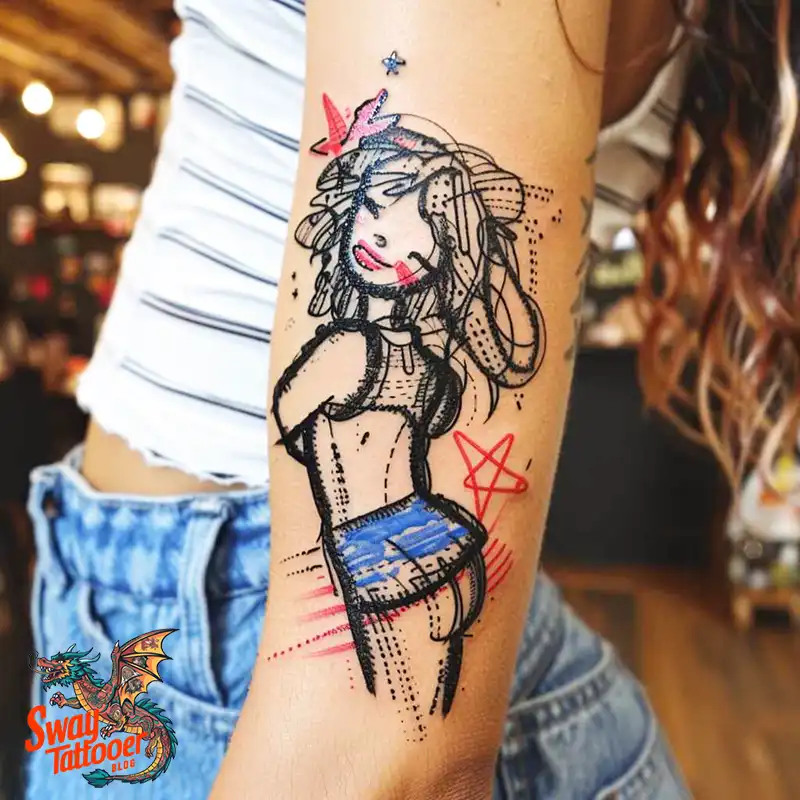
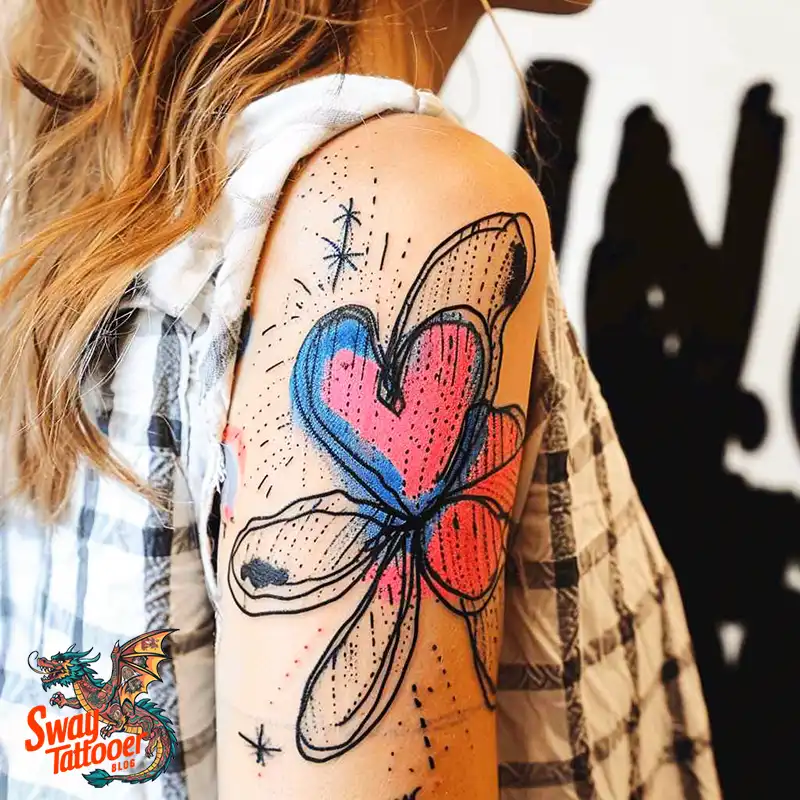
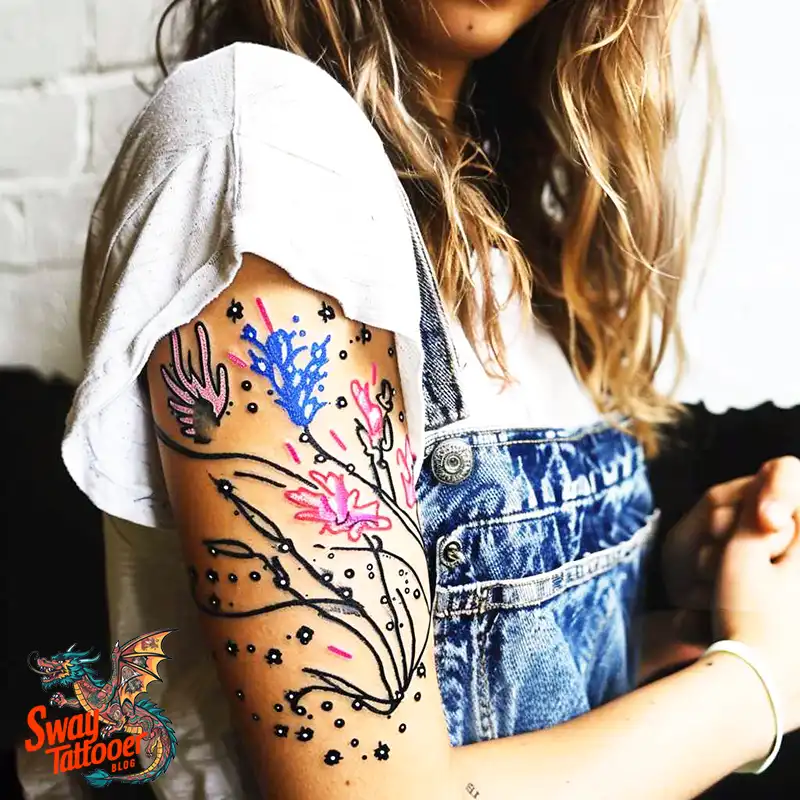

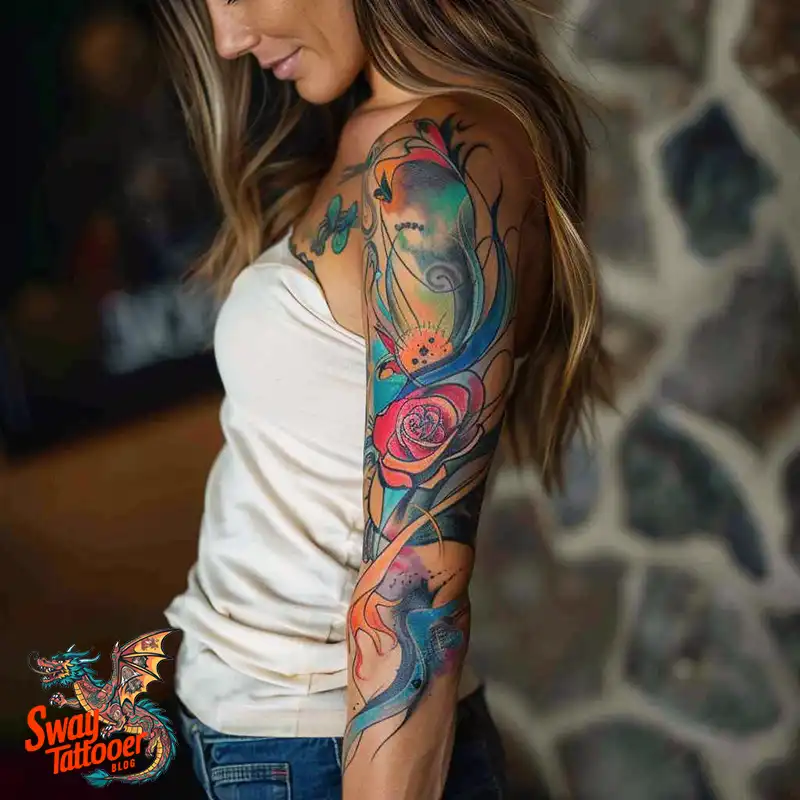
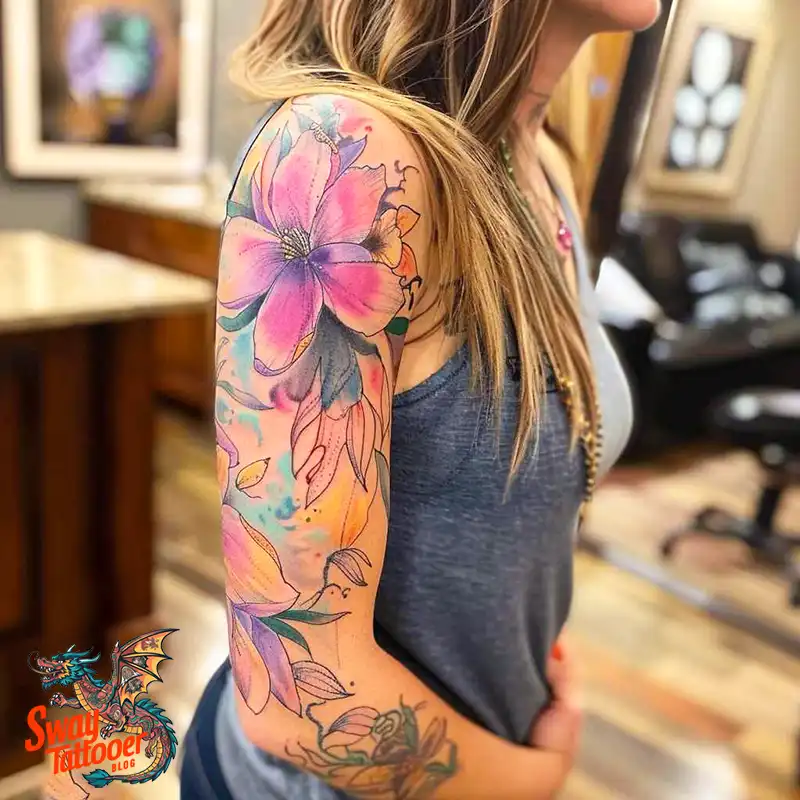
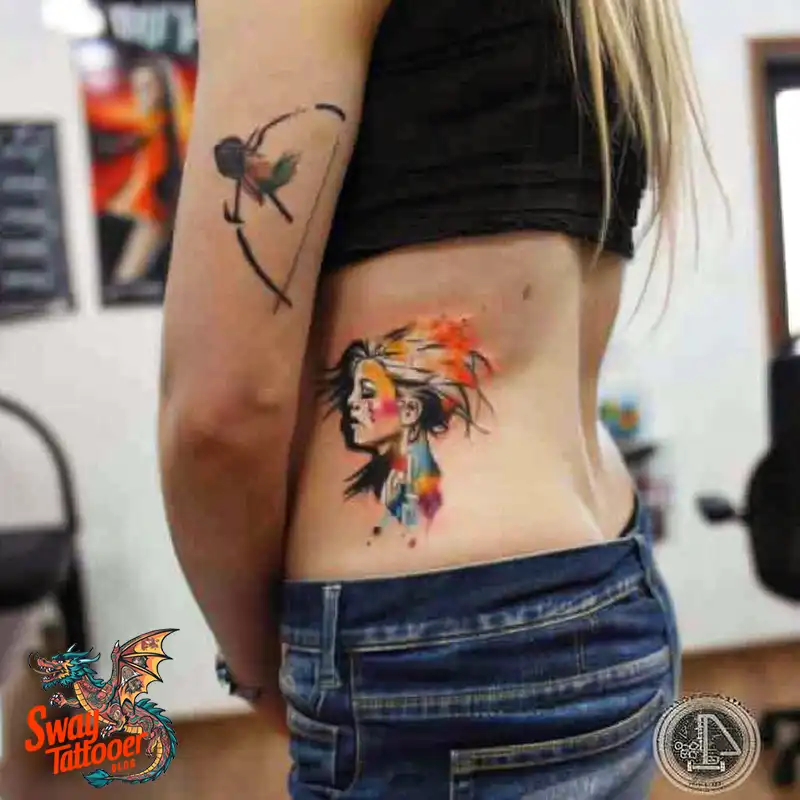
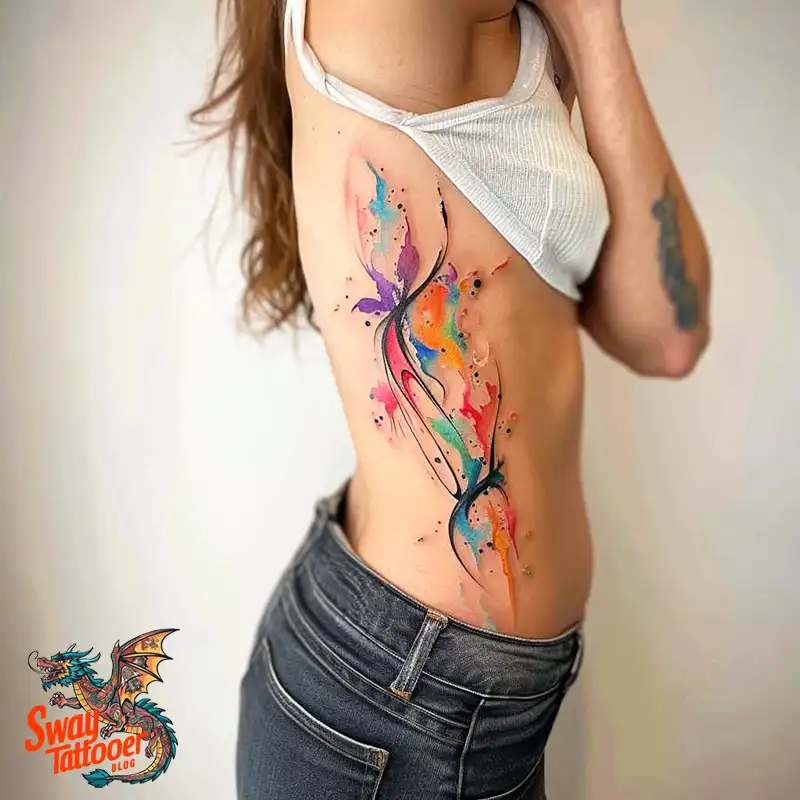
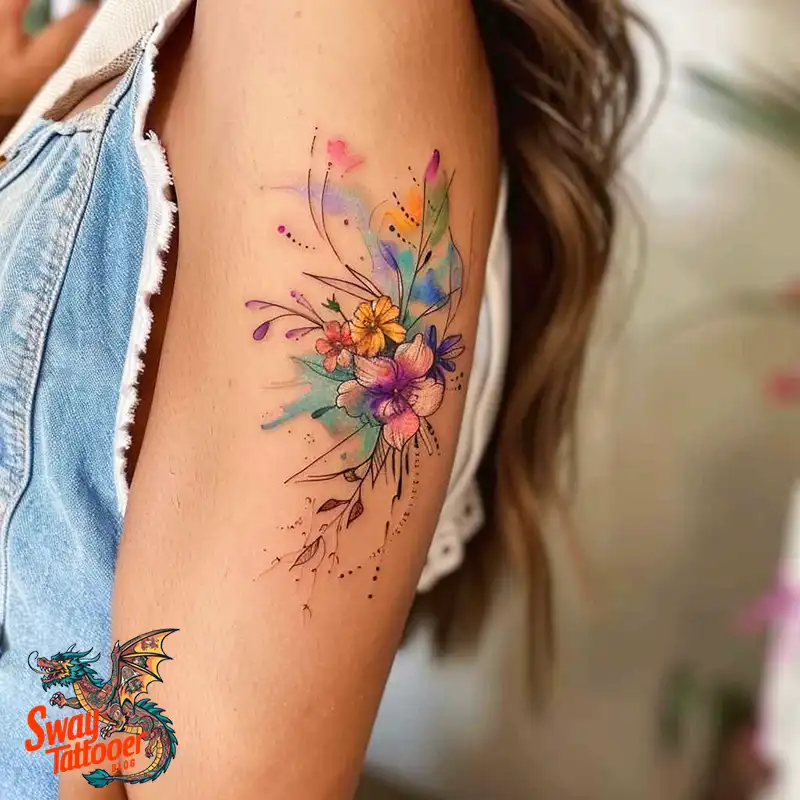
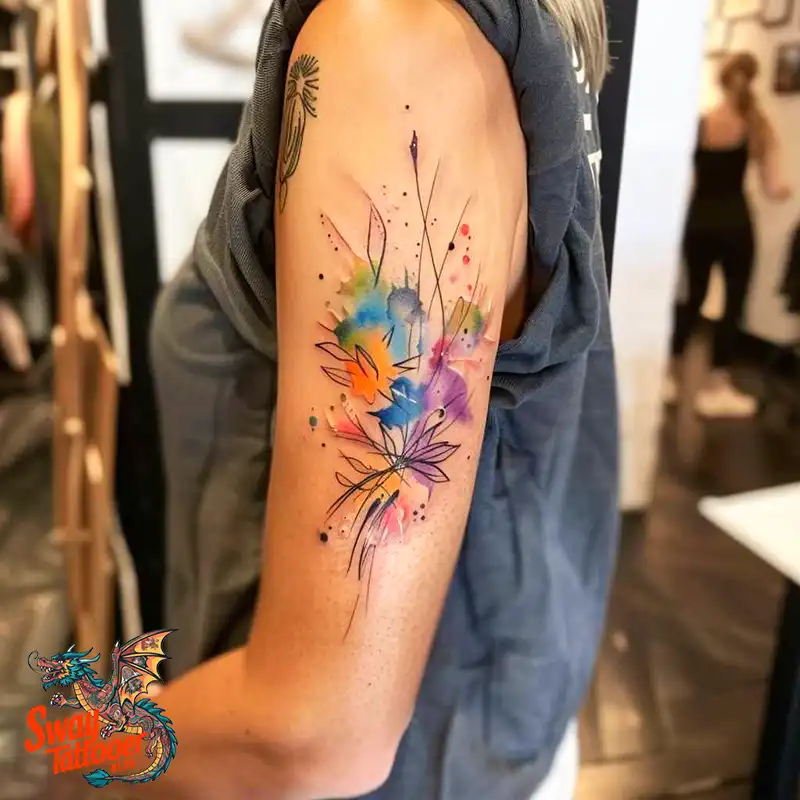
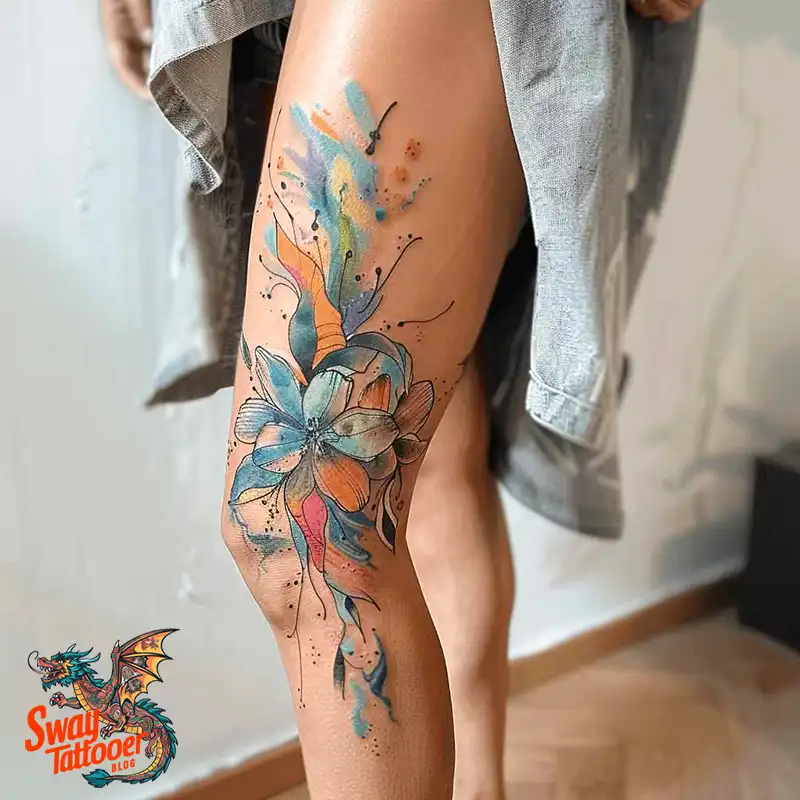
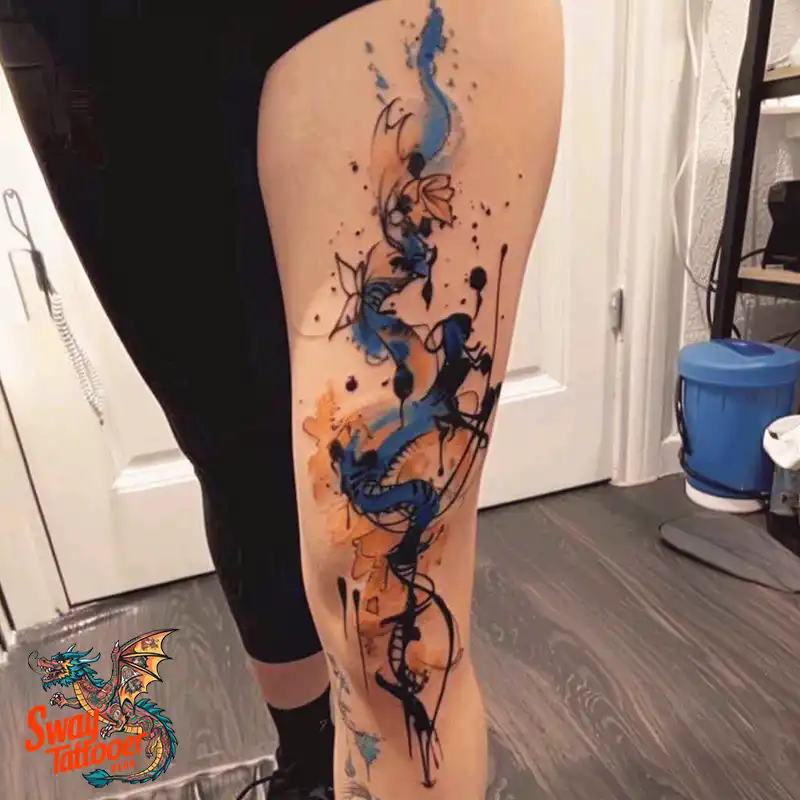
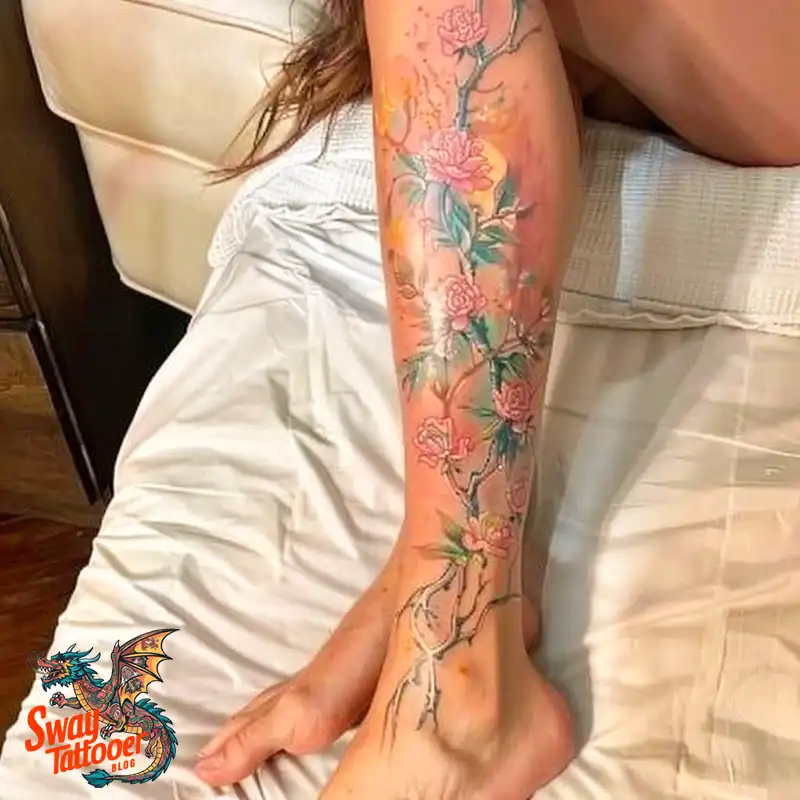
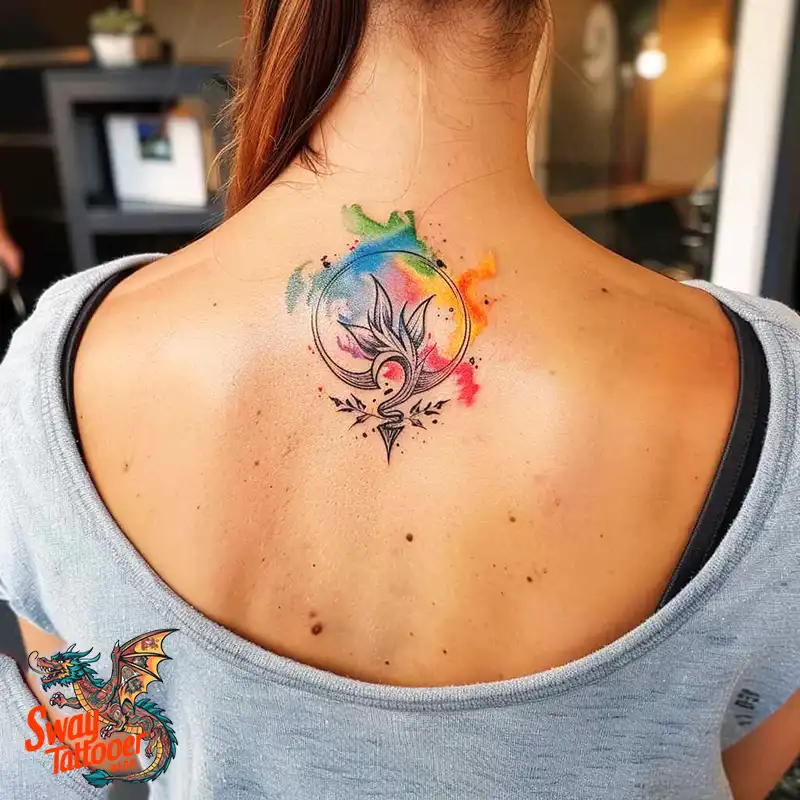
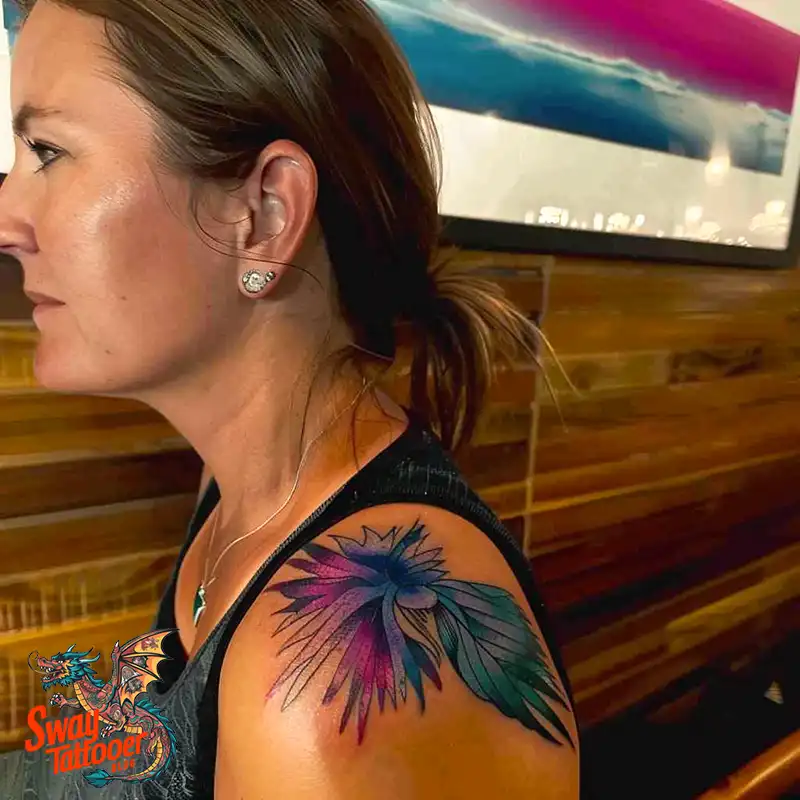
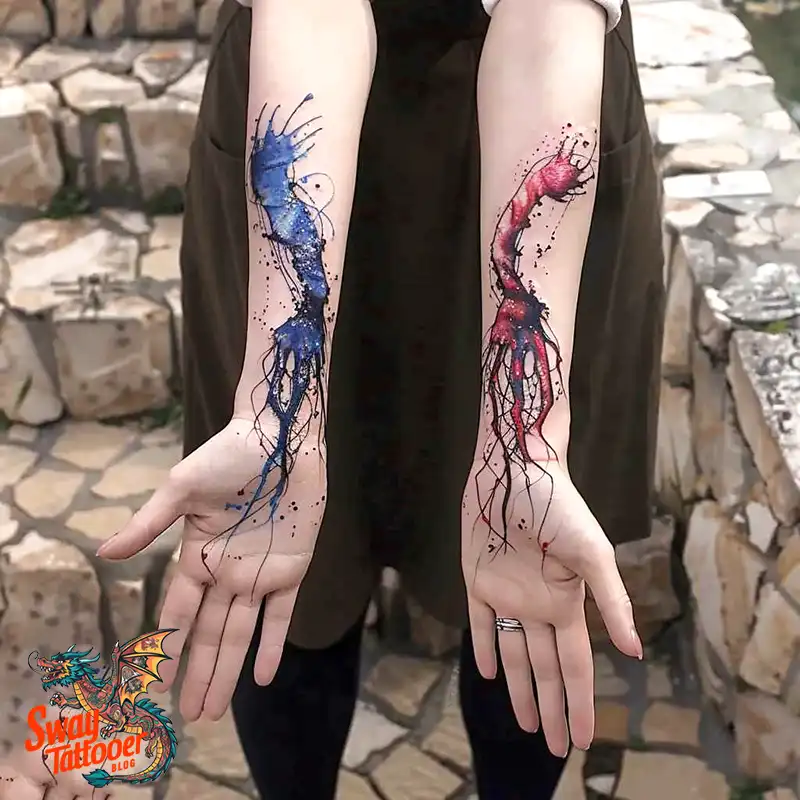
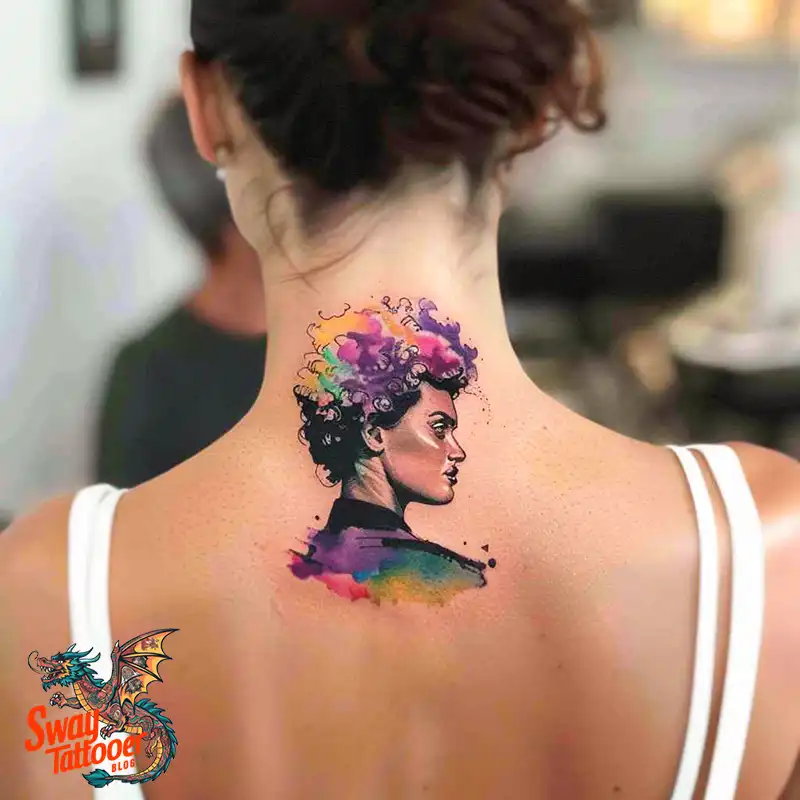
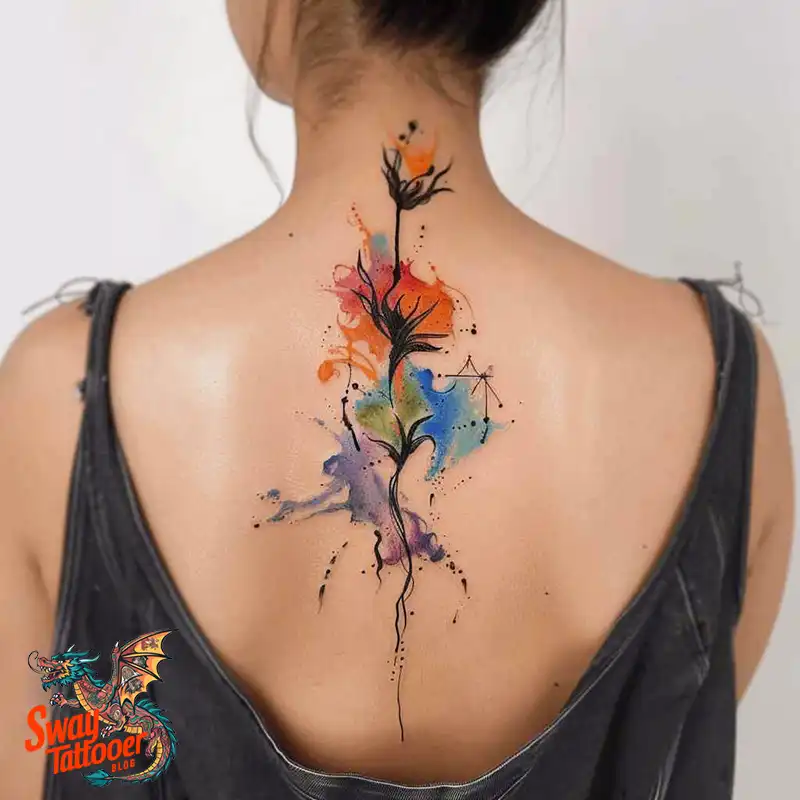
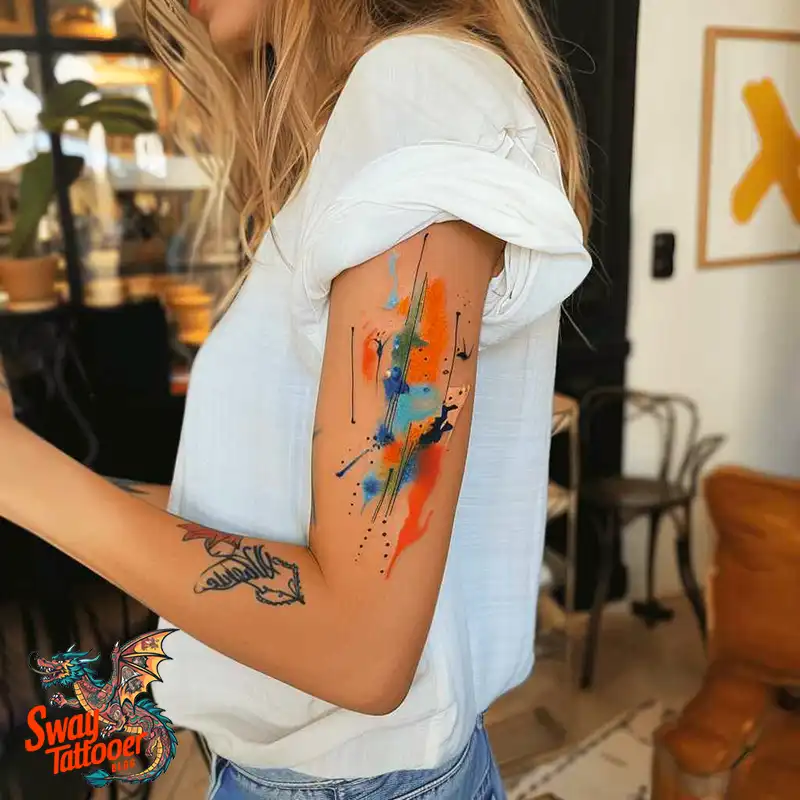

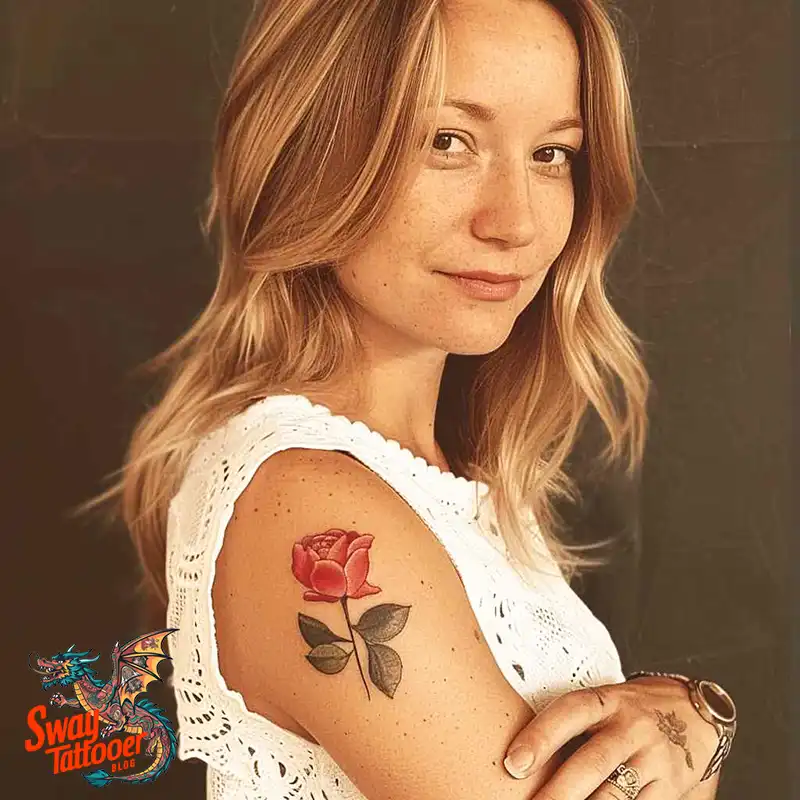
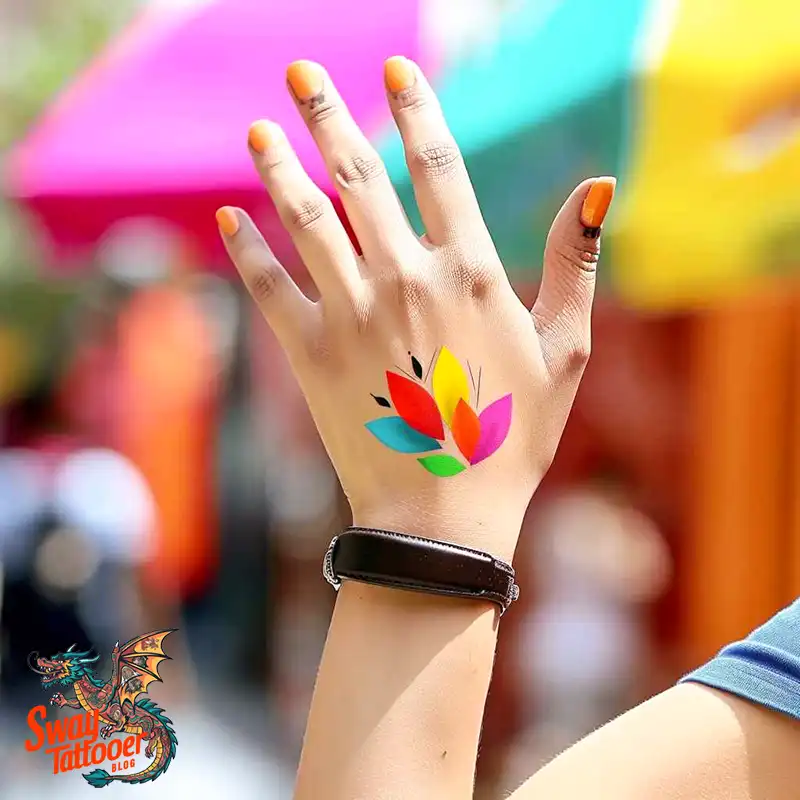
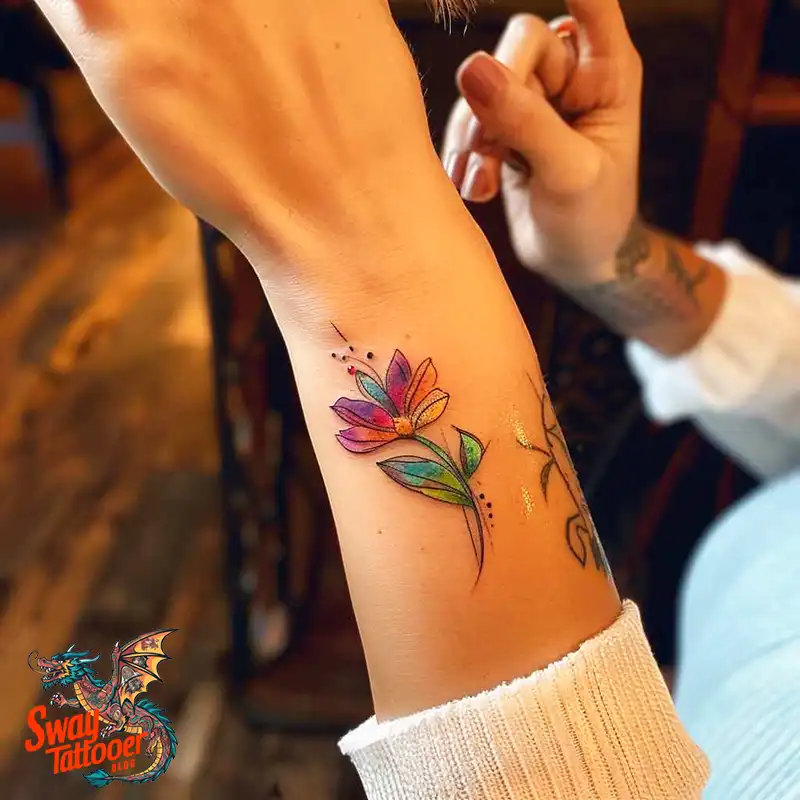
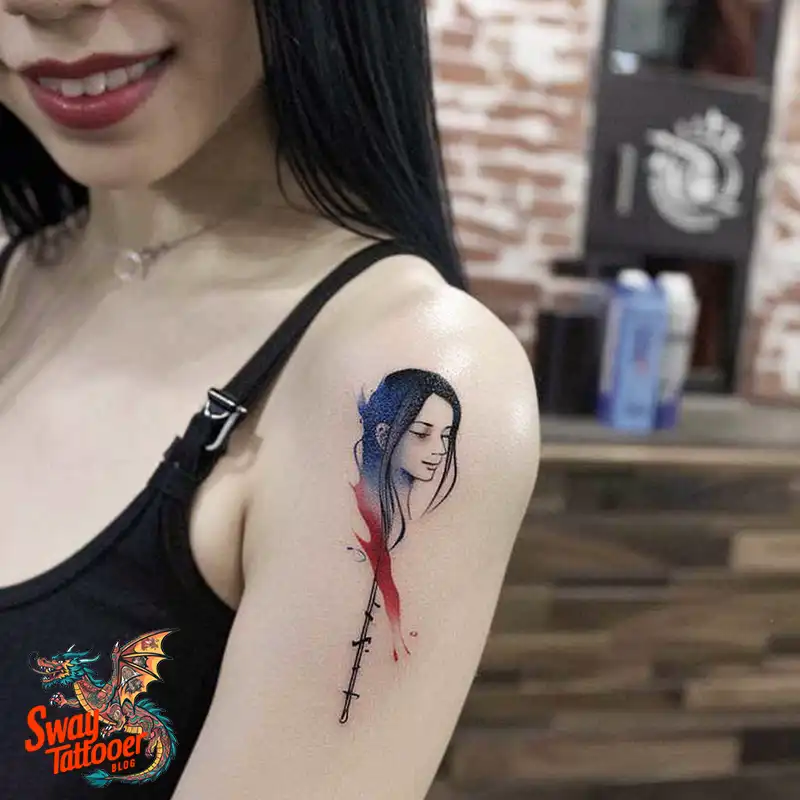
Origins of Watercolor Tattoos
Watercolor tattoos started gaining fame in the early 2000s. They borrow the soft, flowing look of watercolor paintings and apply it to the skin. Artists like Ondrash from the Czech Republic helped pioneer this style. They pushed past old tattoo rules to make dreamy, abstract art.
Techniques and Styles
Watercolor ink arts require a great deal of skill and imagination. Here are some key tricks artists use:
- No Outlines
- What it is: No black lines around the color.
- Look: Smooth, soft edges that blend like paint on paper.
- Color Gradients
- What it is: Colors fade gently from one shade to another.
- Look: Adds depth and makes the tattoo appear as if it’s been painted.
- Splatter and Drips
- What it is: Tiny drops or splashes of color.
- Look: Feels lively, like fresh paint that could drip.
- Overlaying Colors
- What it is: Layers of different colors on top of each other.
- Look: Creates rich, multi-layered designs with intricate detail.
Postcare for Tattoos
Good care keeps your watercolor tattoo bright and fresh.
- Immediate Aftercare
- Keep Covered: Wear a clean bandage for the first few hours.
- Gentle Cleaning: Wash gently with mild, unscented soap and warm water.
- Moisturize: Use a thin layer of tattoo cream or unscented lotion.
- Long‑Term Care
- Avoid Sun: Cover your tattoo or use high‑SPF sunscreen to stop fading.
- Moisturize Often: Keep skin soft to lock in color.
- Avoid Harsh Soaps: Use gentle products that won’t dry out your skin.
Myth Busting
- Fading Faster? Light colors can fade, but good aftercare helps them last for years.
- Short‑Lived? A skilled artist places ink deep enough to keep it vibrant over time.
- Hard to Remove? All tattoos can be removed with lasers, though bright colors may need more sessions.
Selecting the Right Artist
Picking the right artist makes all the difference.
- Portfolio Review: Choose someone whose work shows tattoos you love.
- Consultations: Talk through your ideas and ask about their experience.
- Recommendations: Ask friends or read online reviews to find an artist you can trust.
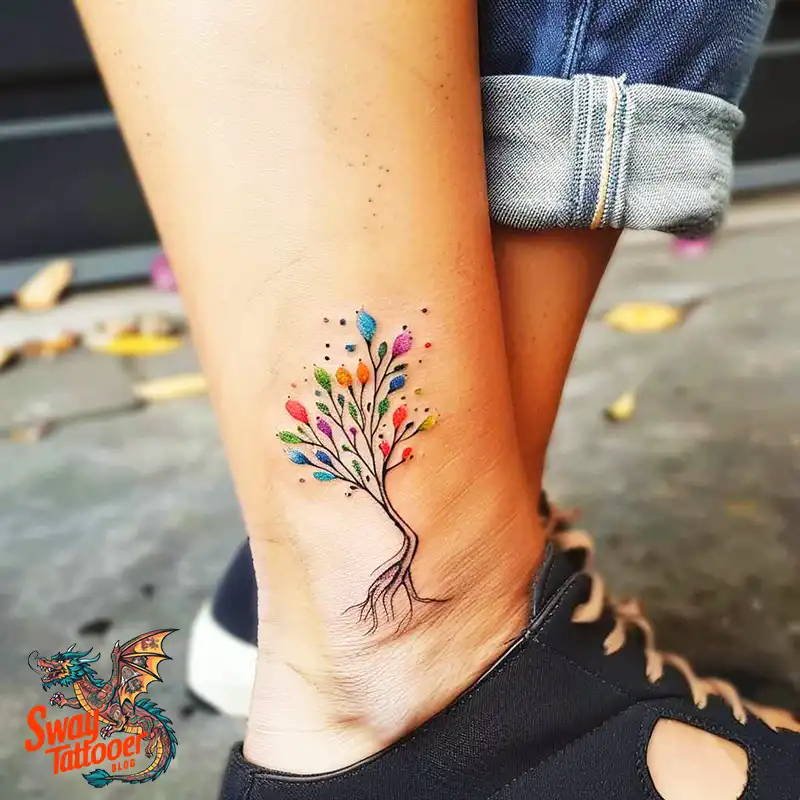
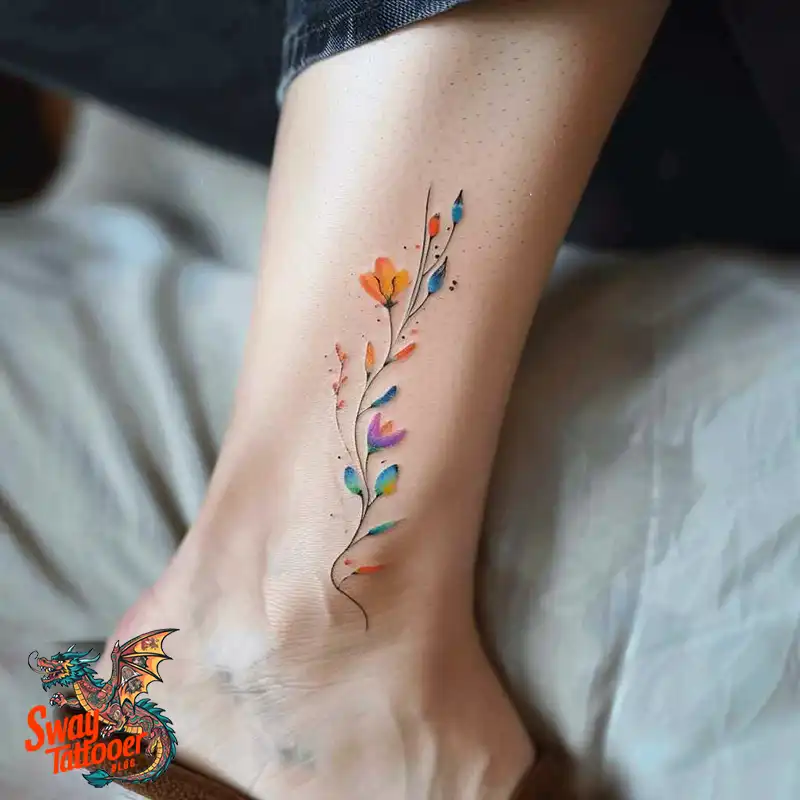
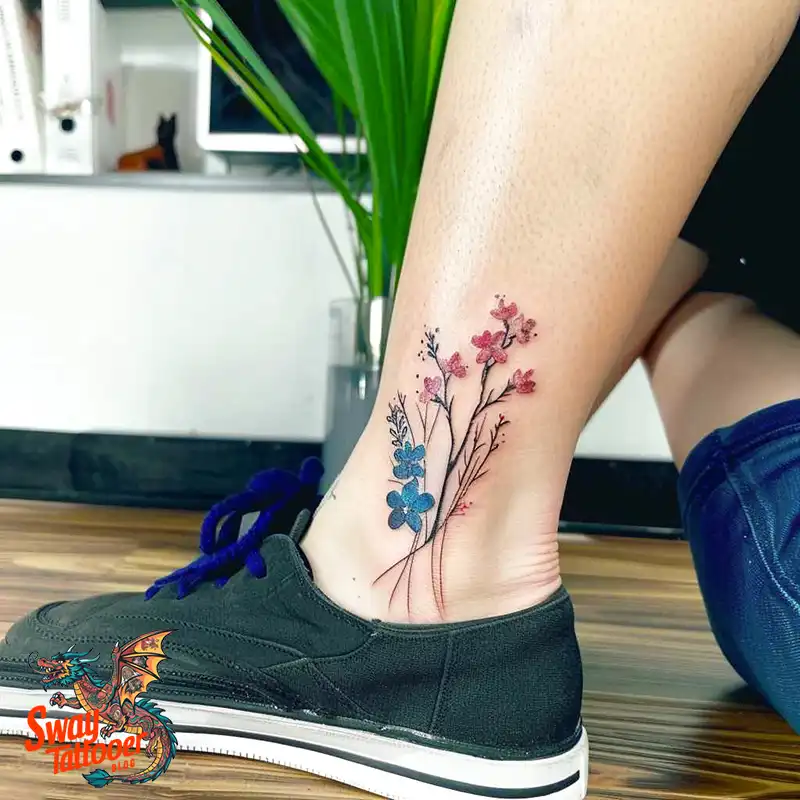
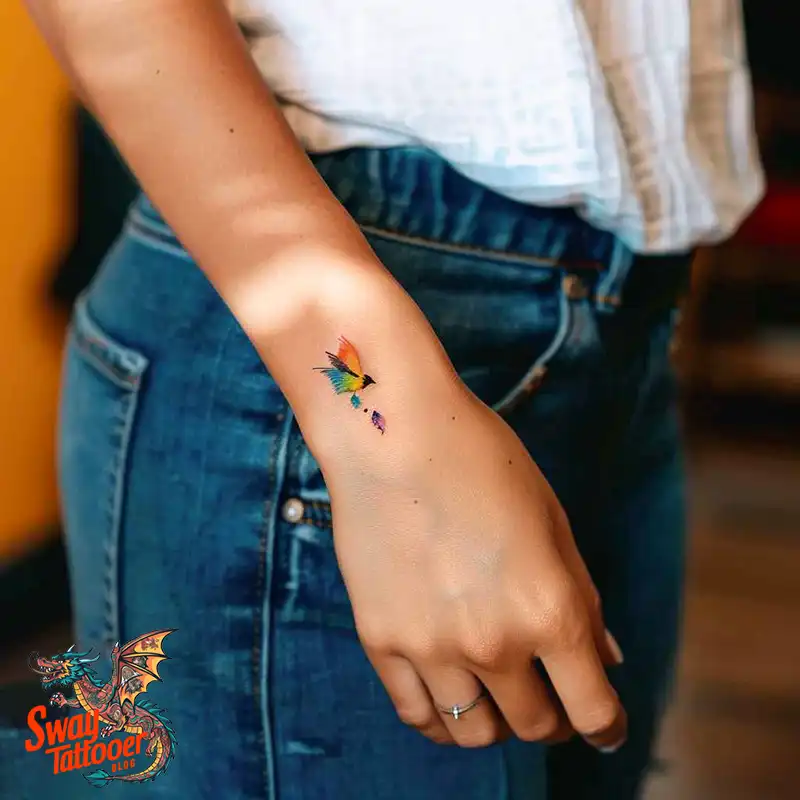
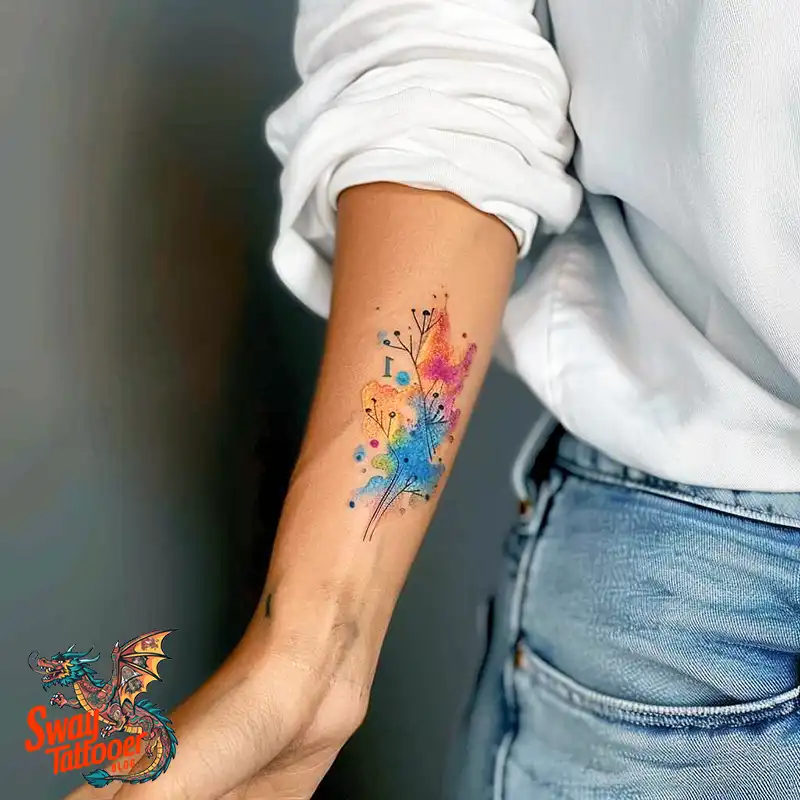

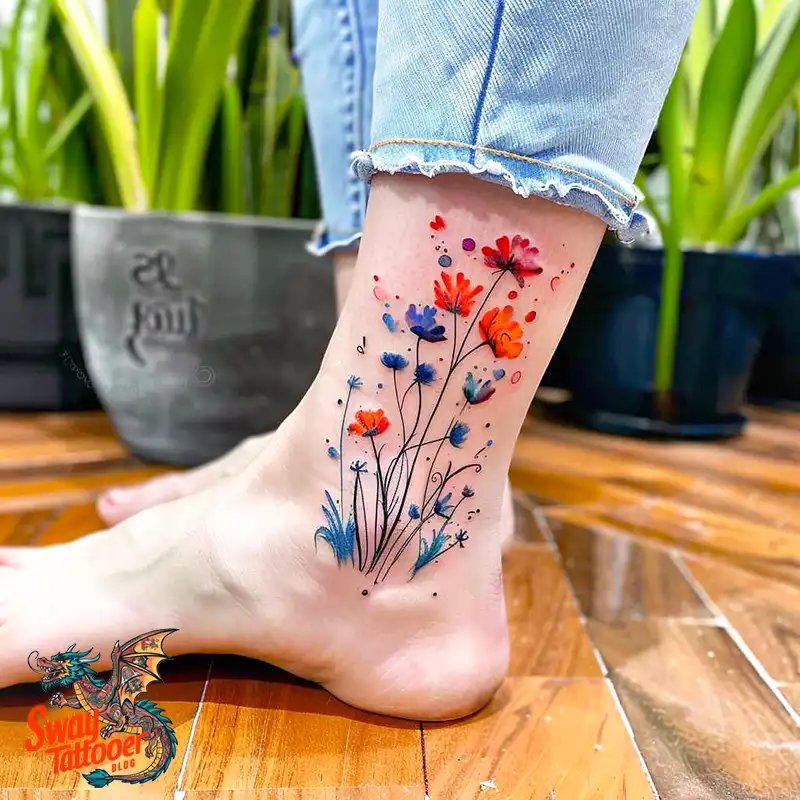
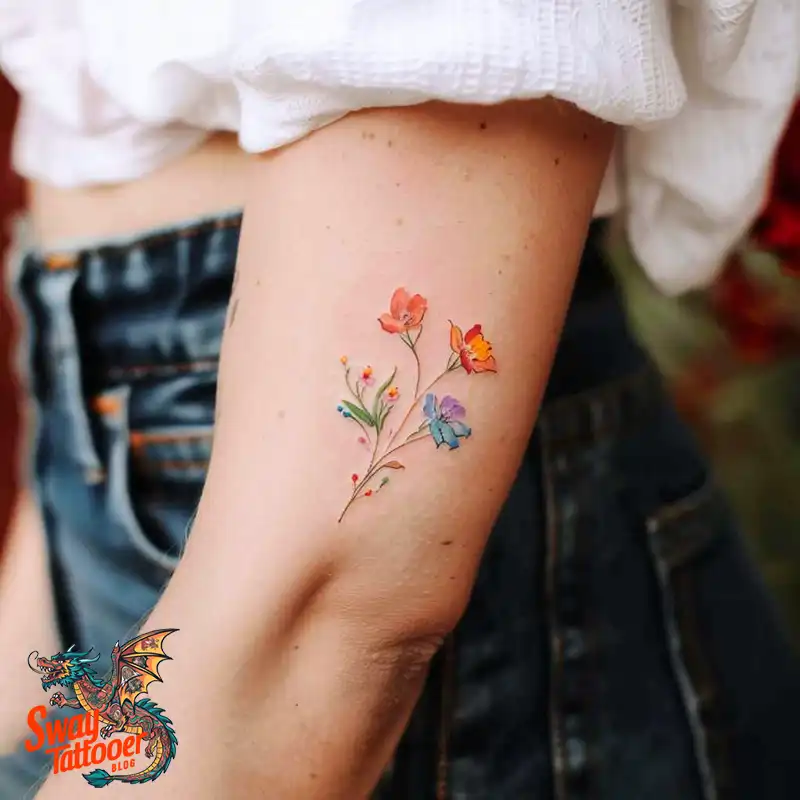
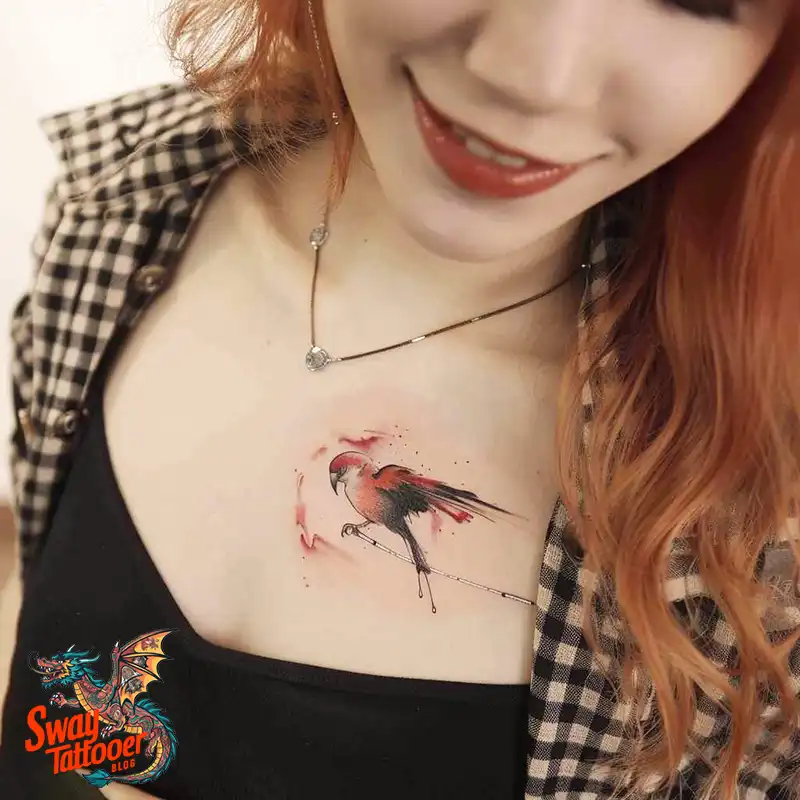
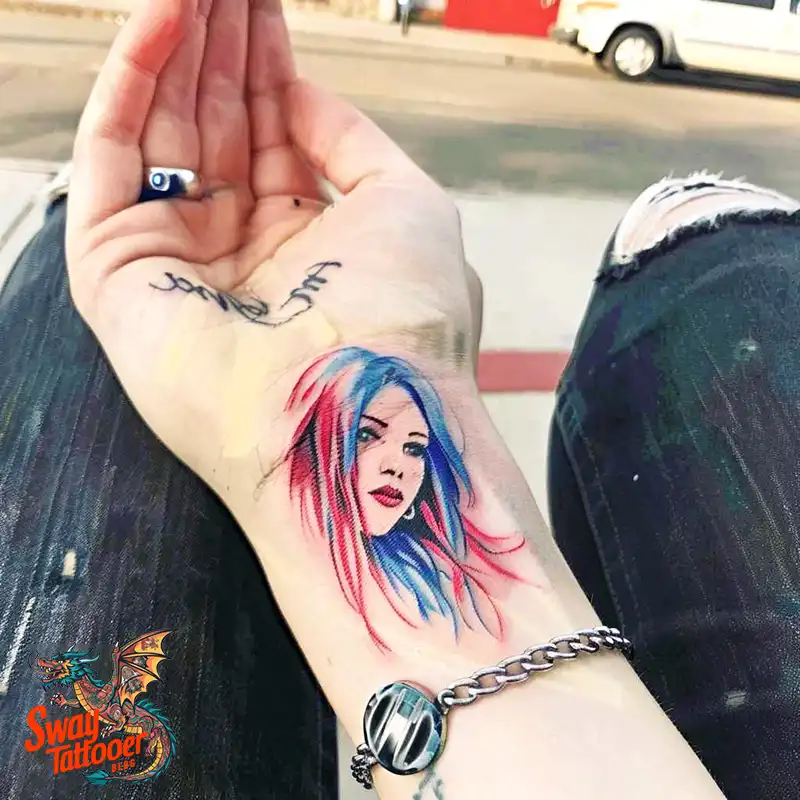
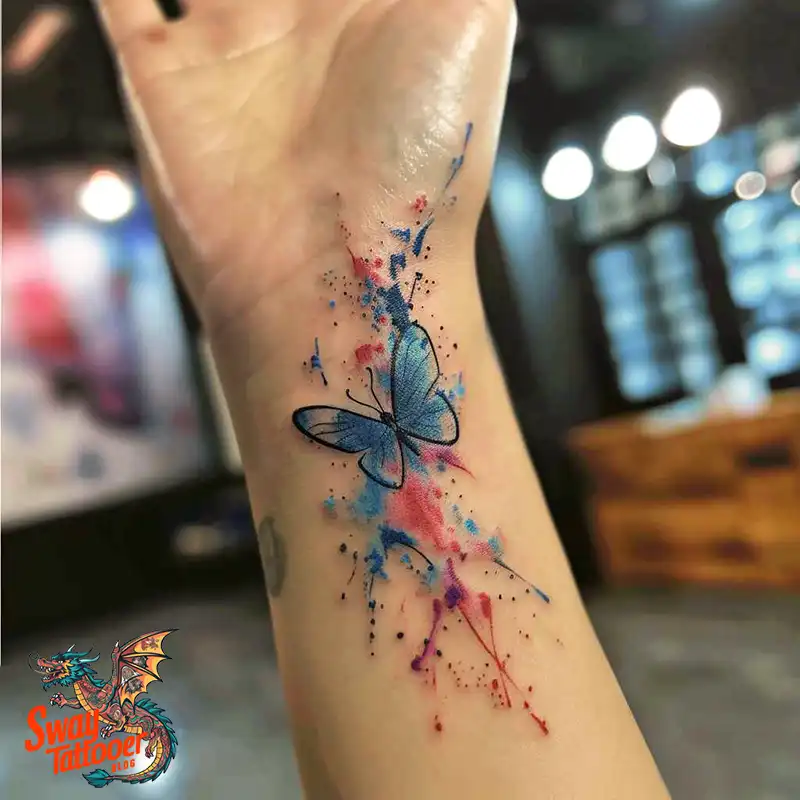
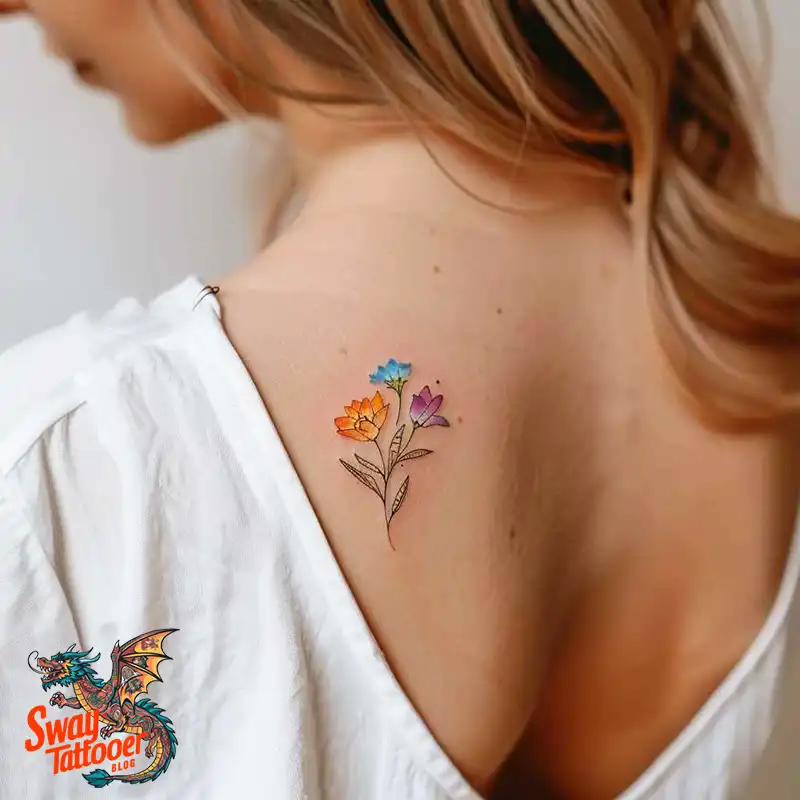
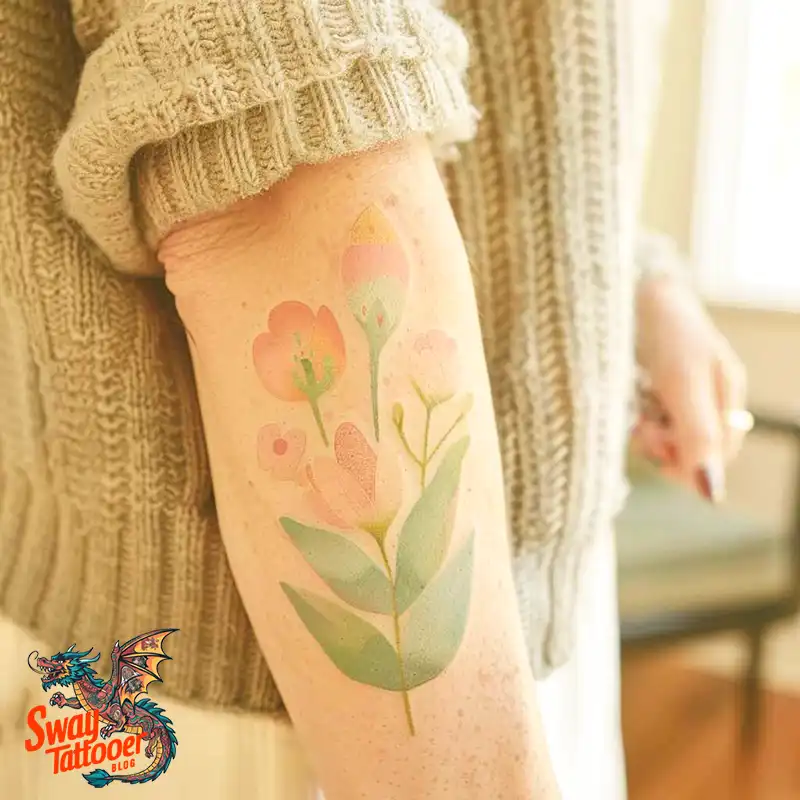
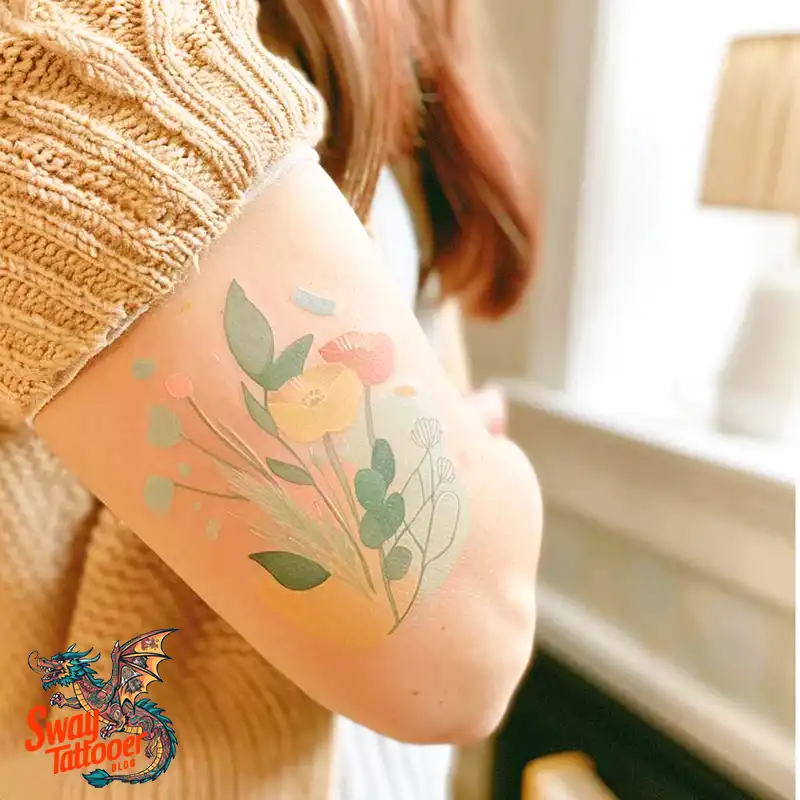
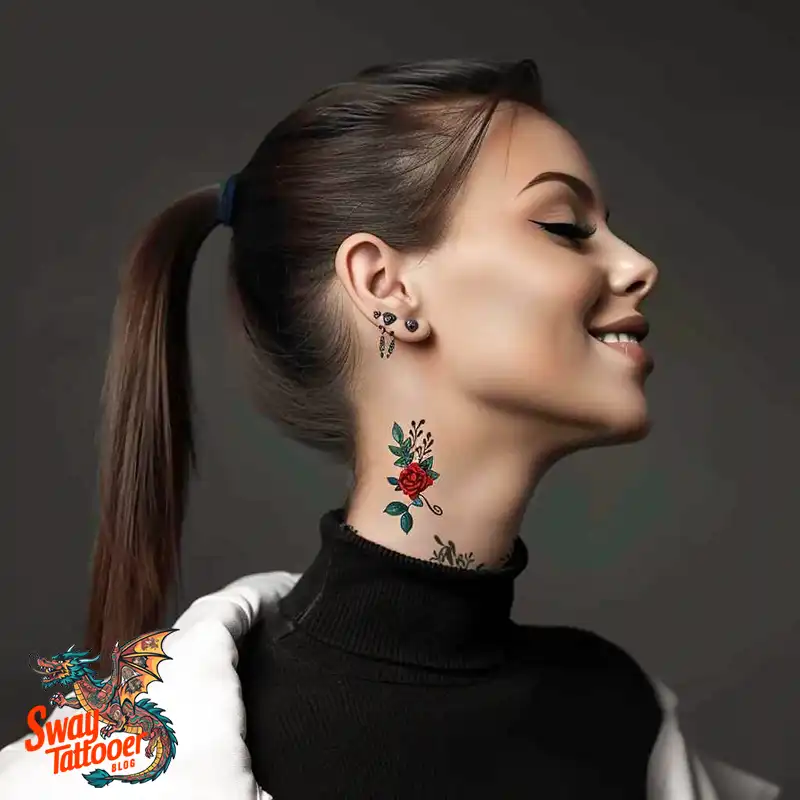
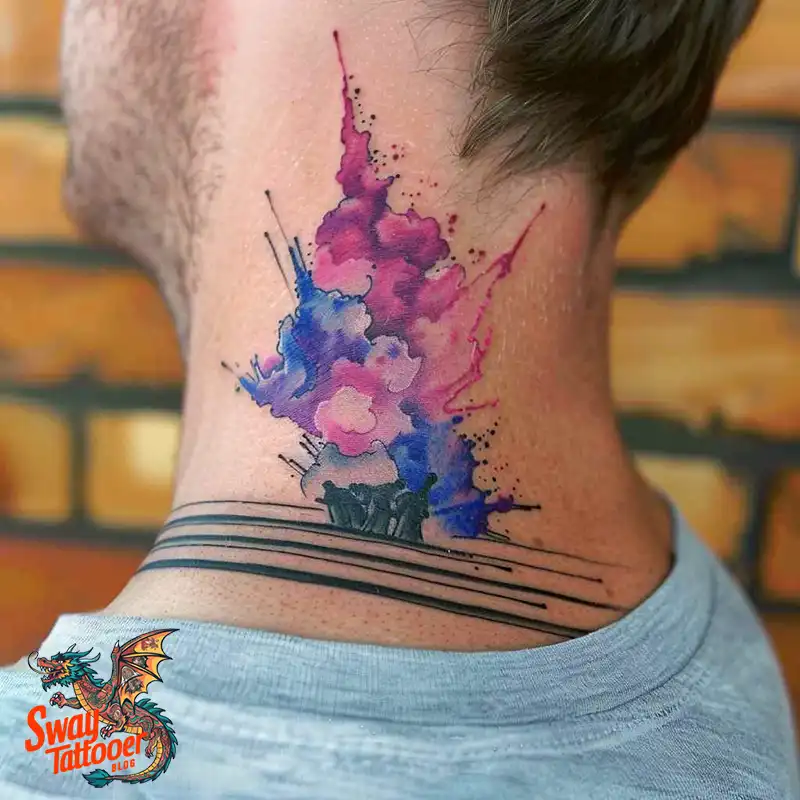
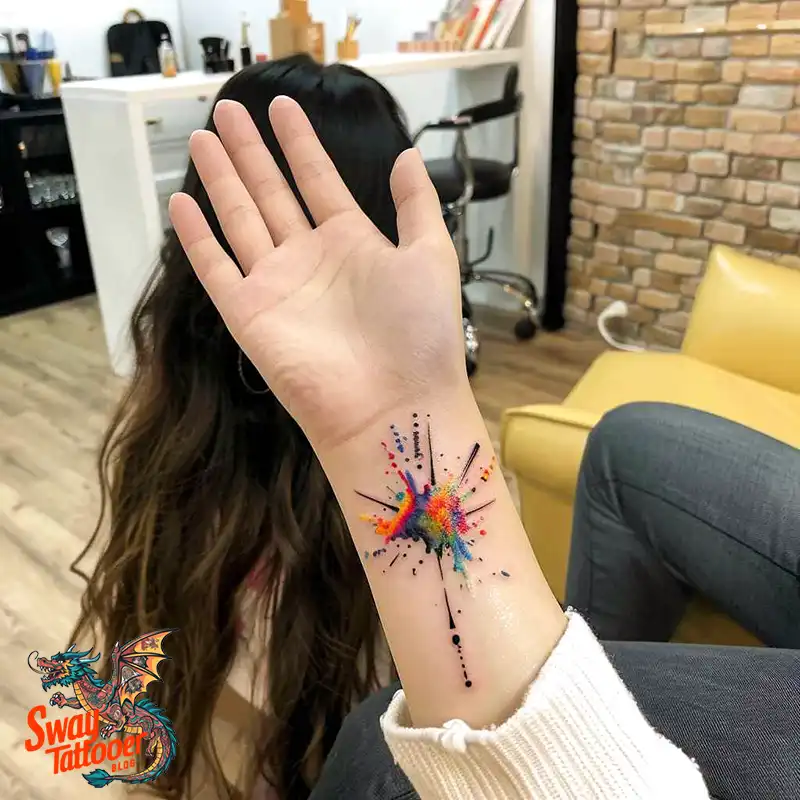
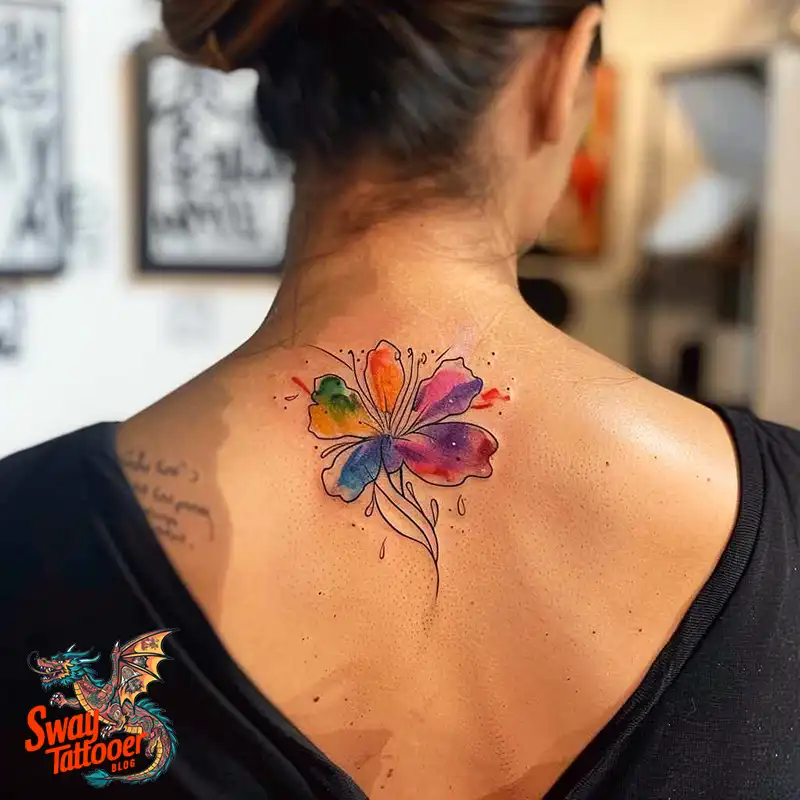
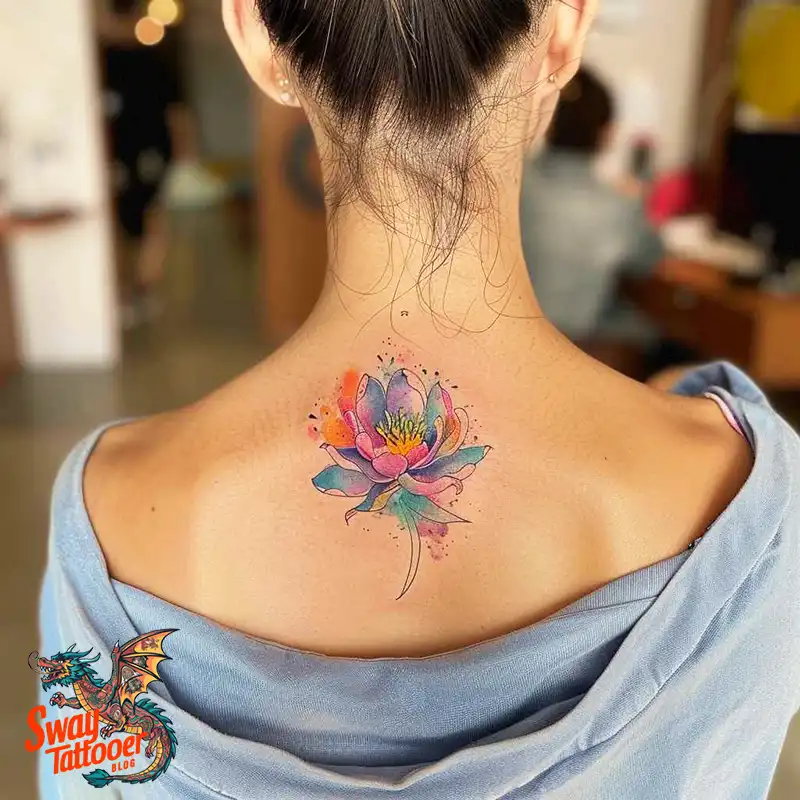
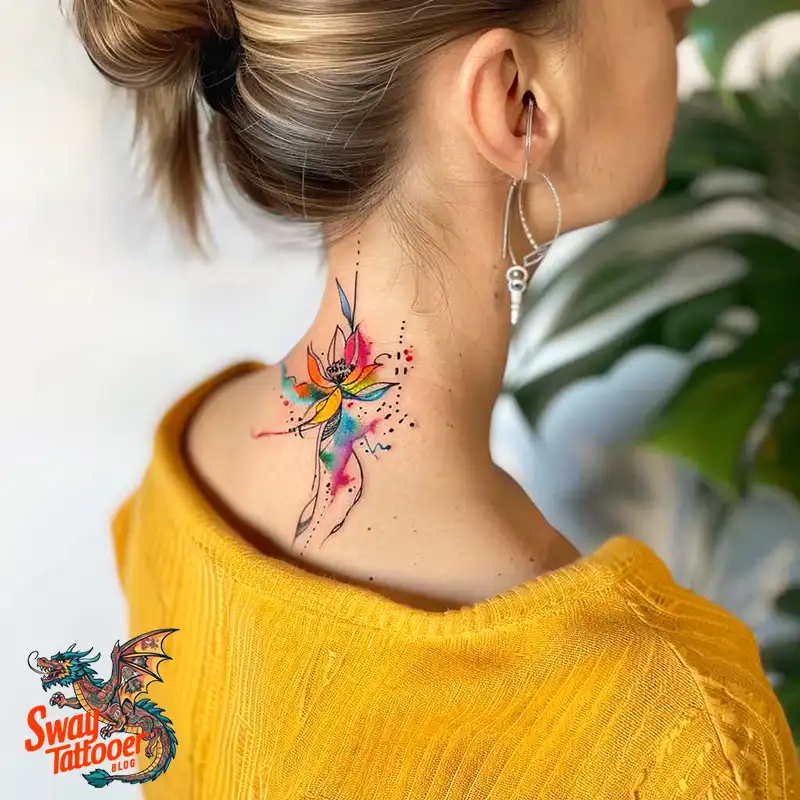
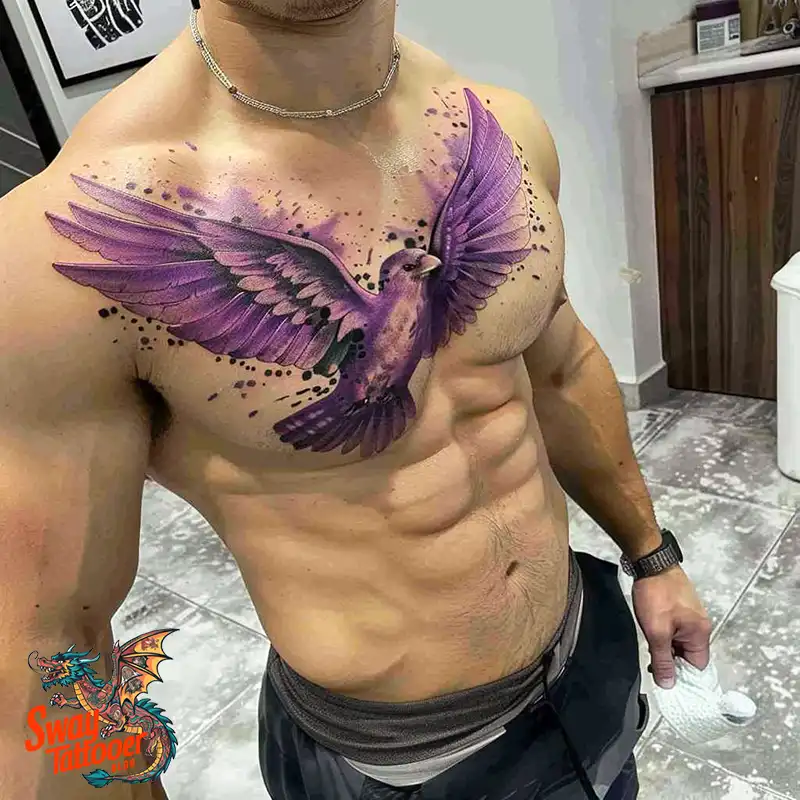
Various Watercolor Tattoos
Below, we discuss various types of watercolor tattoos, providing brief descriptions of each, along with their place in the realm of body art.
Abstract Watercolor Designs
Summary:
Abstract tattoos emphasize shapes and colors over realistic images, allowing for a unique and artistic expression. They use splashes, drips, and swirls of paint-like hues to make fun, busy designs.
Relevance:
These tattoos allow you to express your style and creativity. No two are the same, so they fit people who love modern art and want something unique.
Floral Watercolor Arts
Summary:
Floral watercolor artists paint flowers and leaves in soft, blended colors. Light washes and gentle gradients make the blooms look alive on your skin.
Relevance:
Flowers stand for life, beauty, and change. With watercolor, they feel extra bright and soft, like a real painting you carry with you.
Animal Watercolor Designs
Summary:
Animal watercolor designs draw creatures—from lions to birds—in colorful, flowing paint styles. Some are very real, and some add fun, abstract splashes of color.
Relevance:
Animals can mean power, freedom, or loyalty. Watercolor adds magic and energy, making the animal feel almost alive and full of emotion.
Landscape Watercolor Ink
Summary:
Landscape watercolor inks feature scenes such as mountains, forests, oceans, or skies. Soft lines and gentle color fades give them a dreamy, peaceful look.
Relevance:
Nature lovers pick these tattoos to carry a bit of the wild with them. The misty, calm colors can remind you of favorite places and happy adventures.
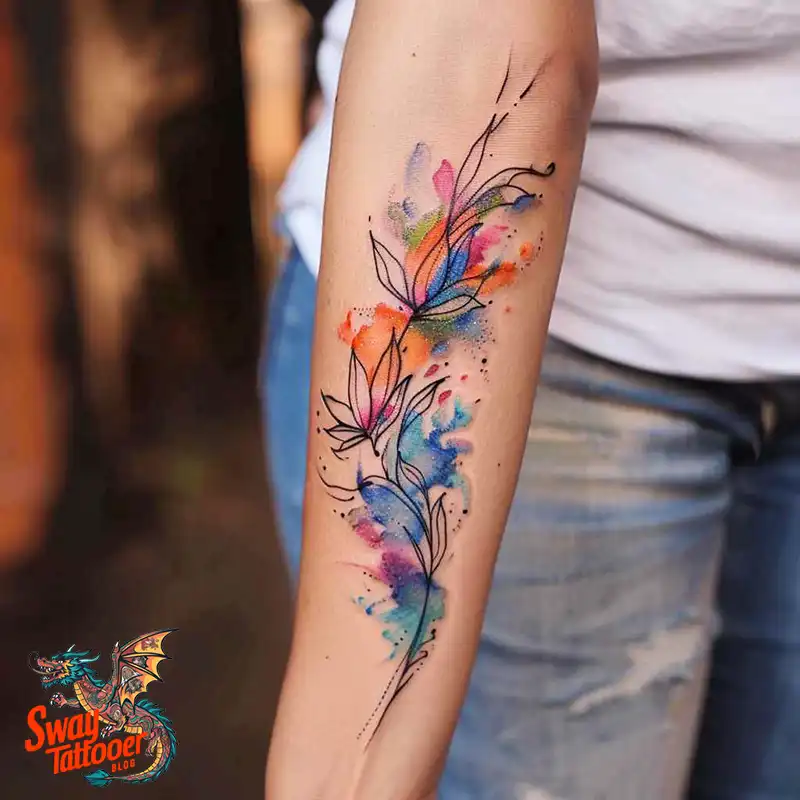
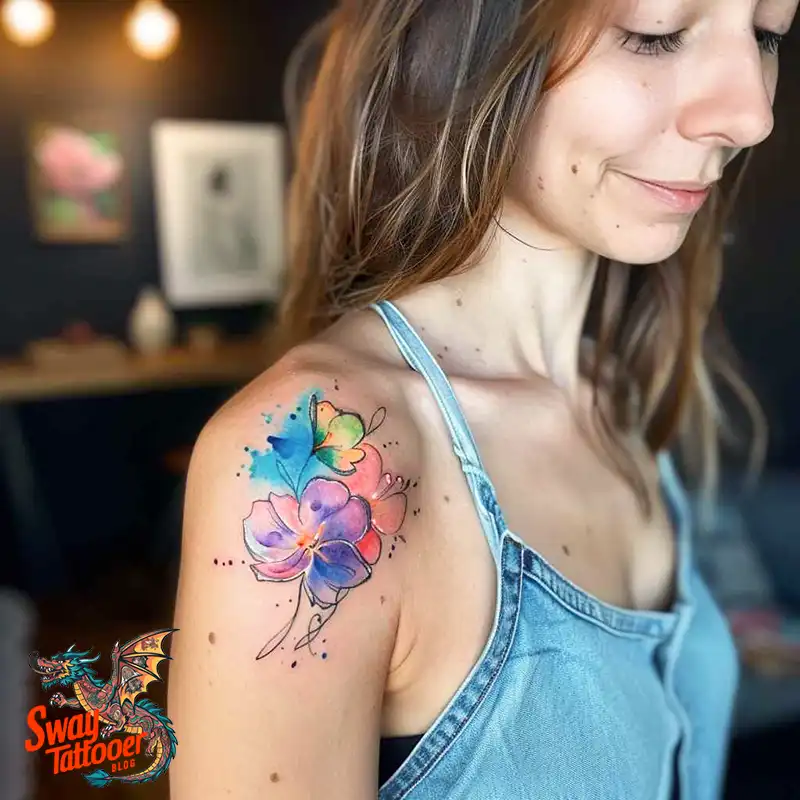
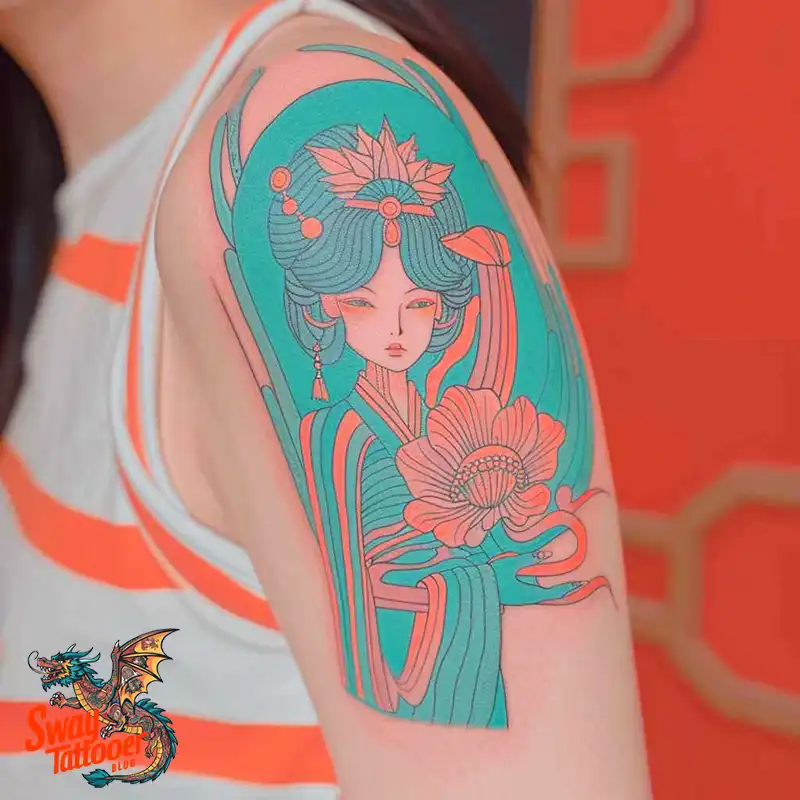

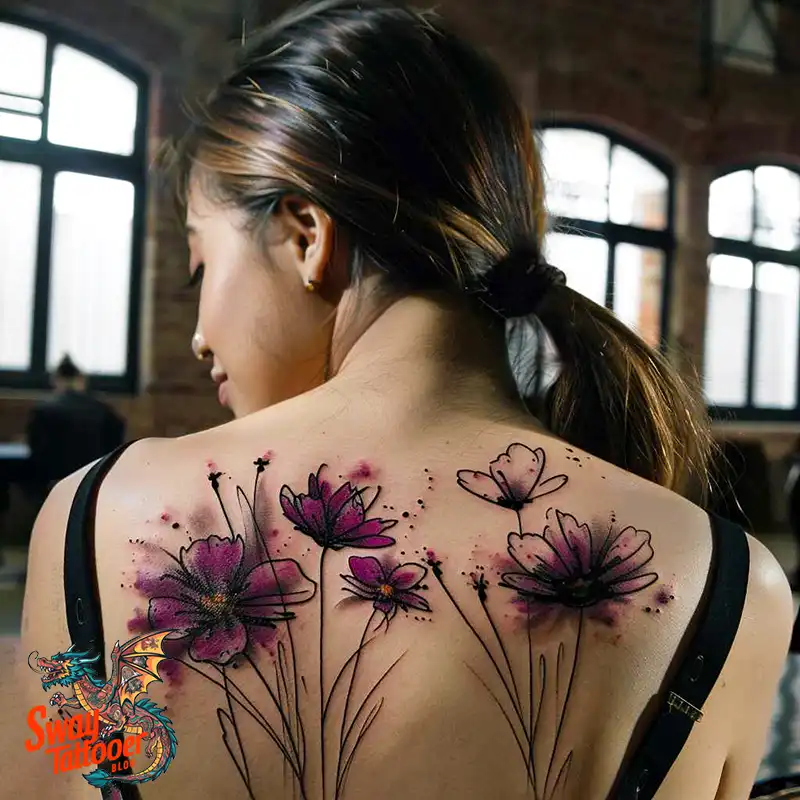
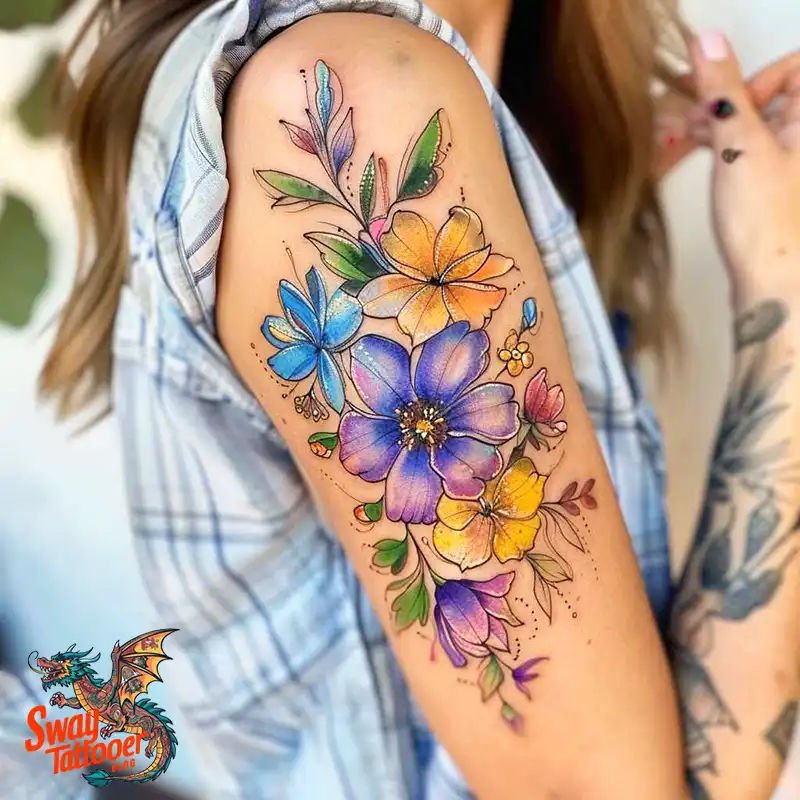
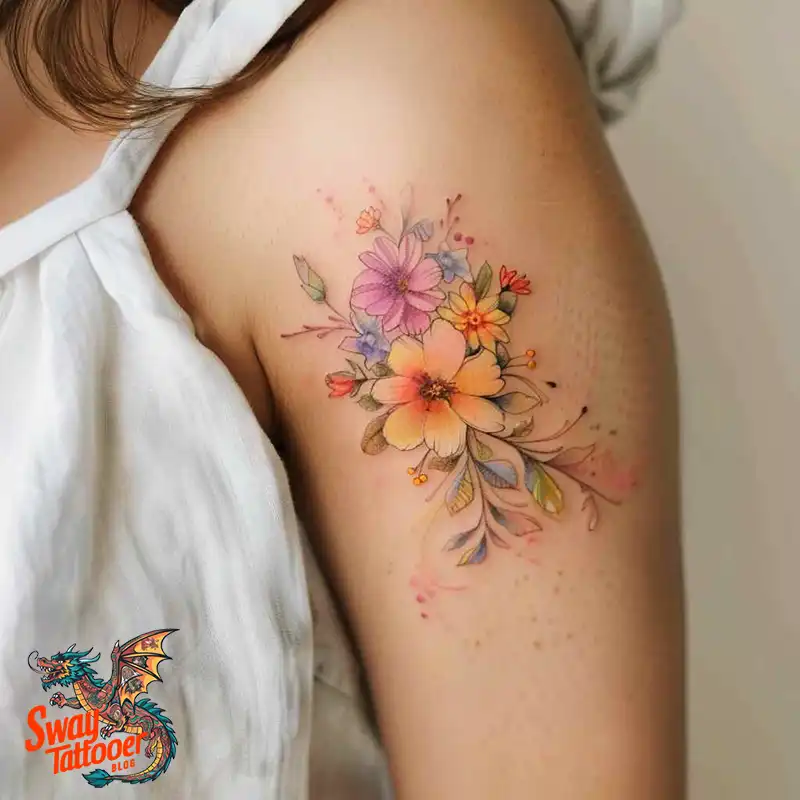
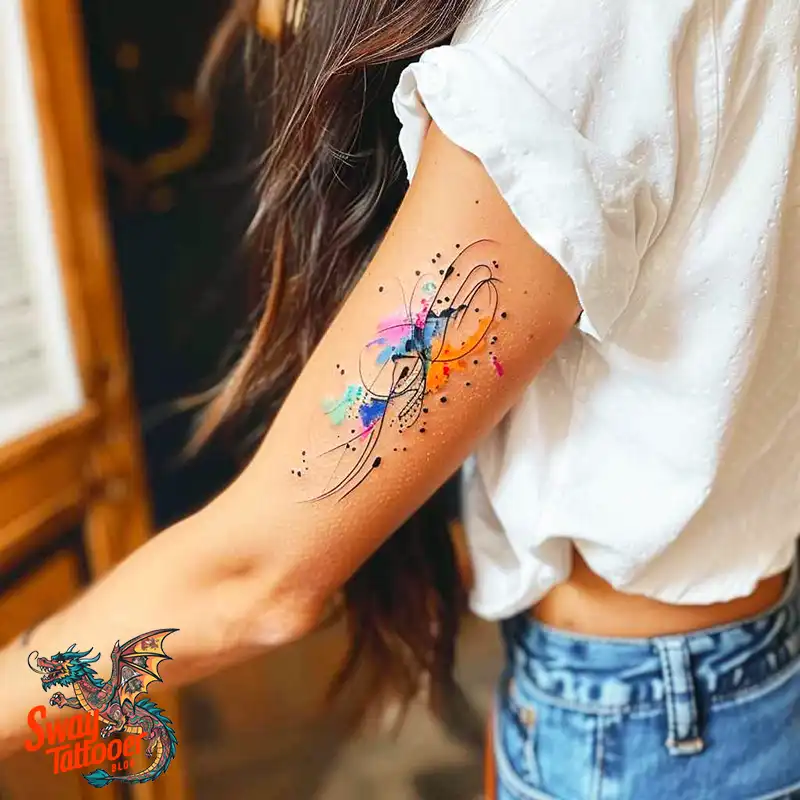
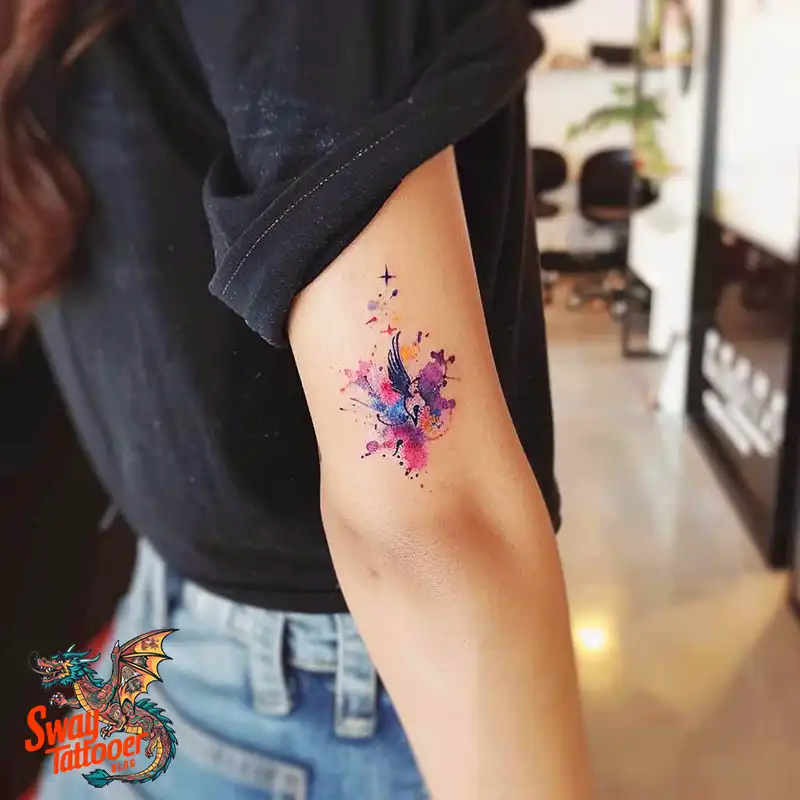
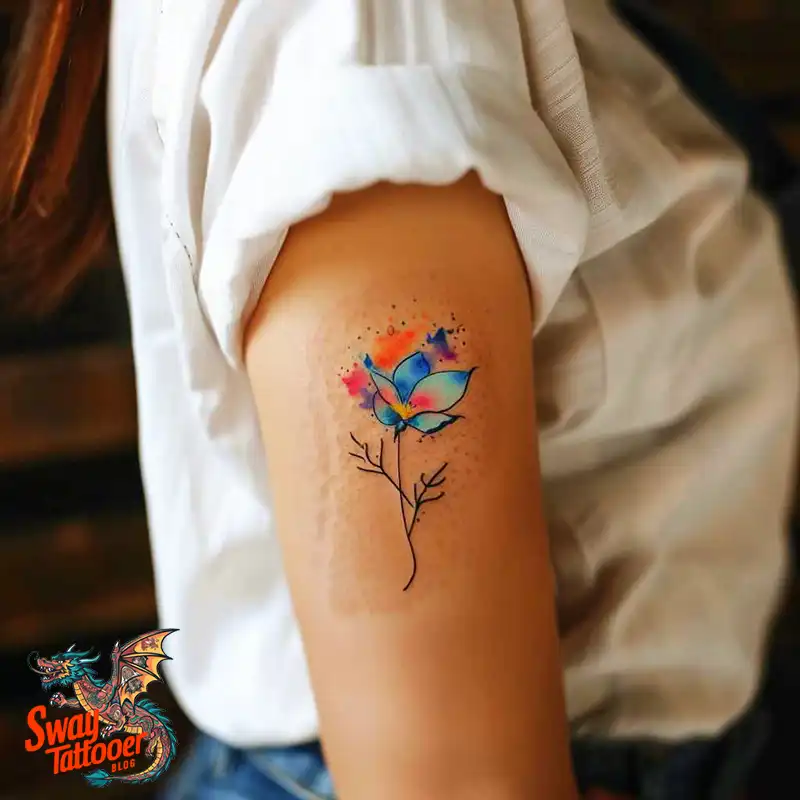

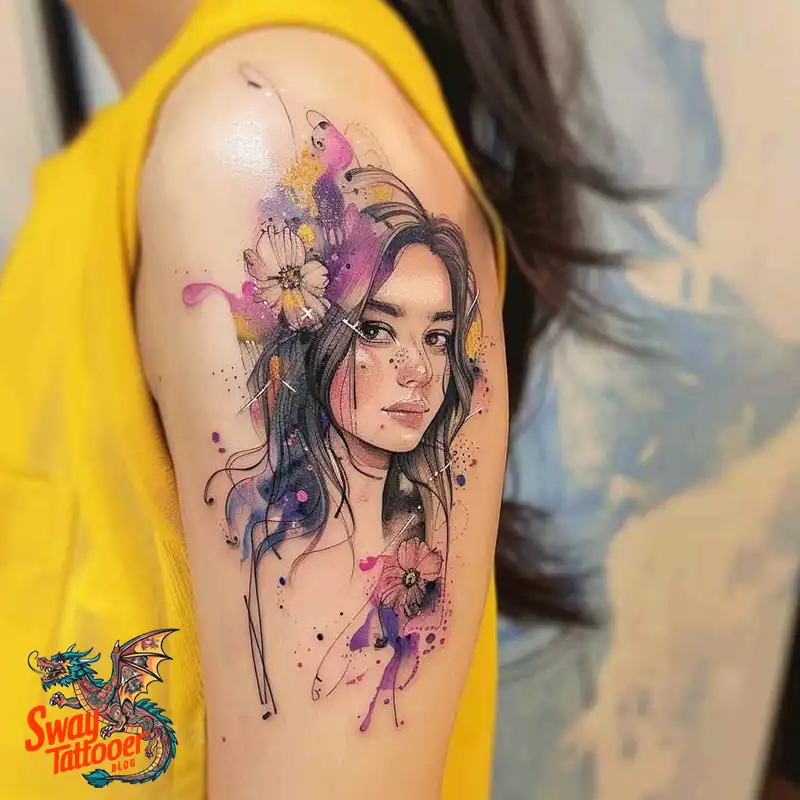
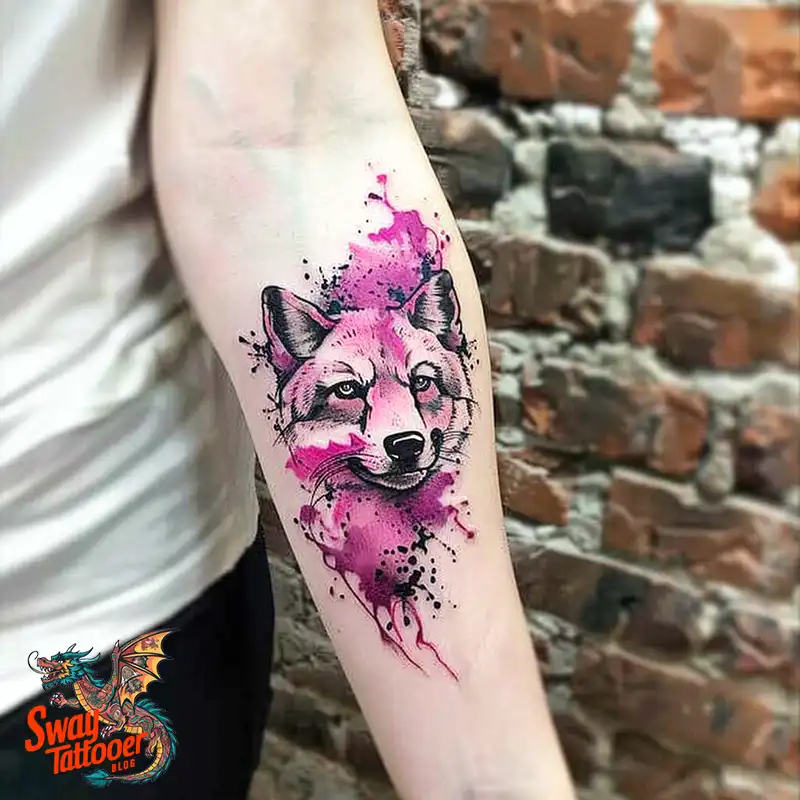
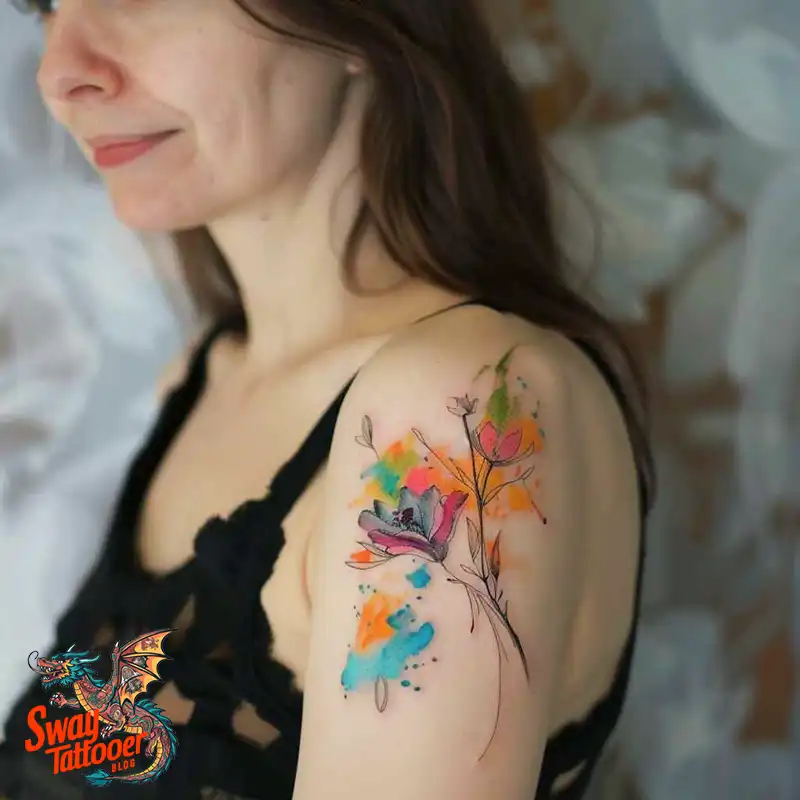
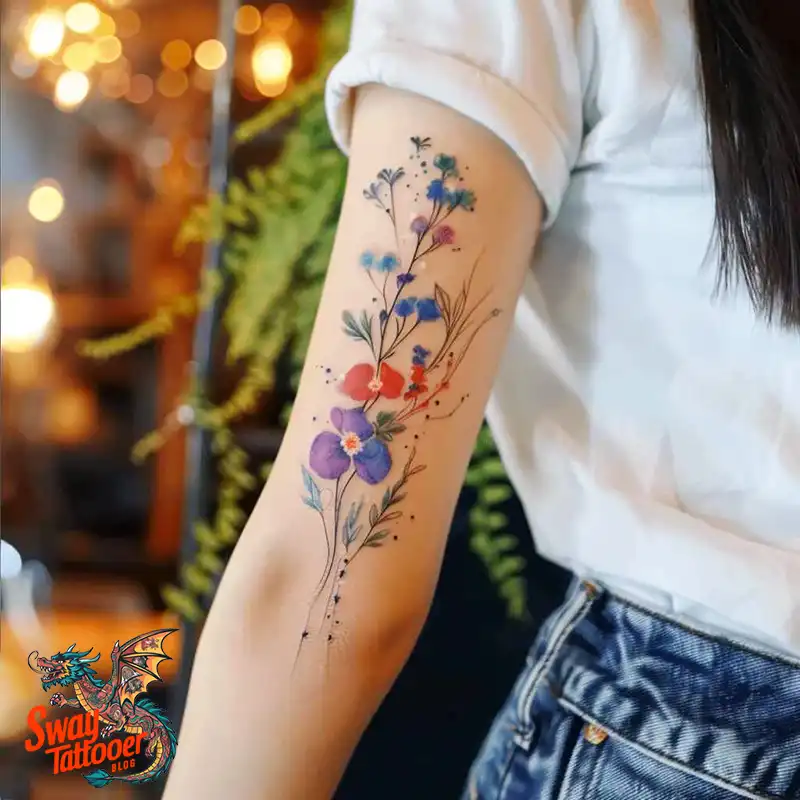
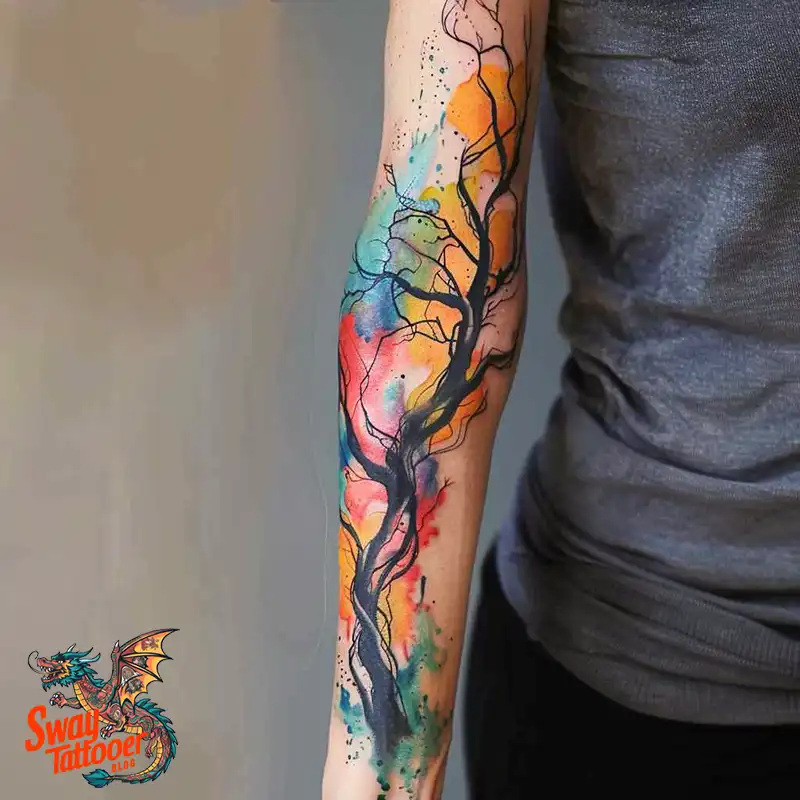
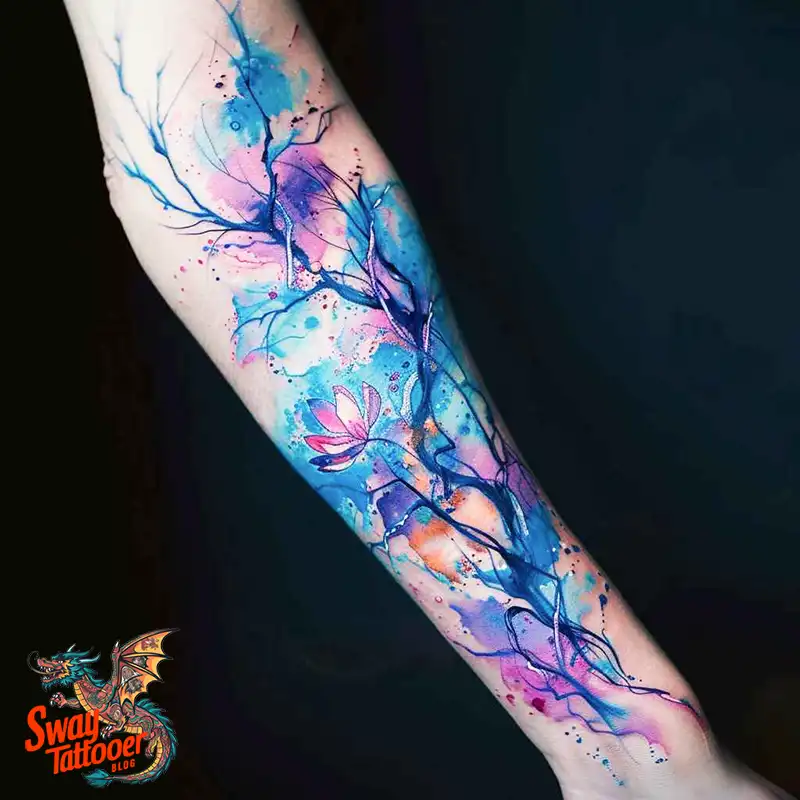
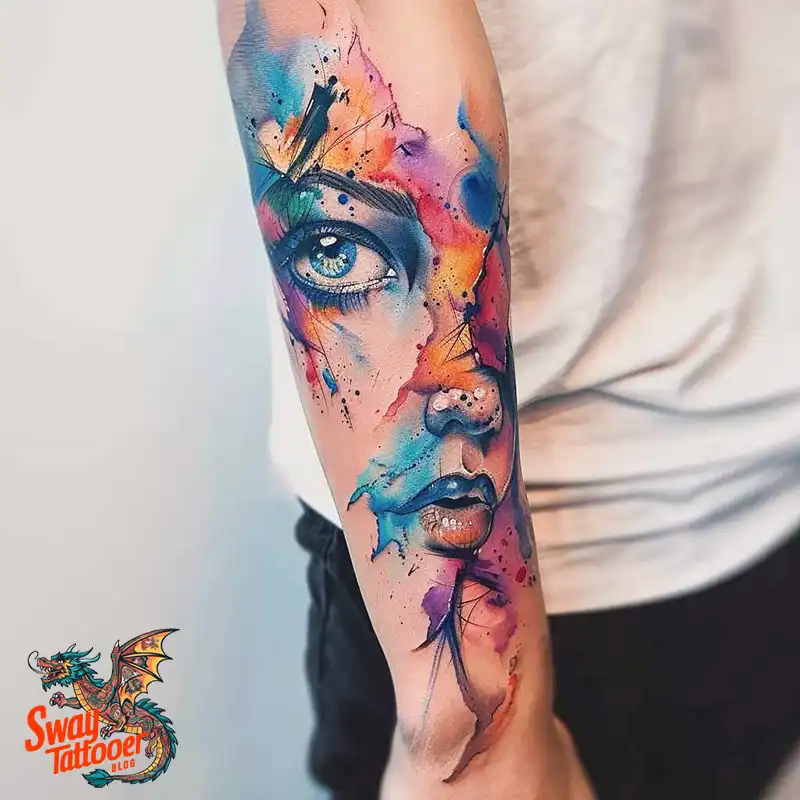
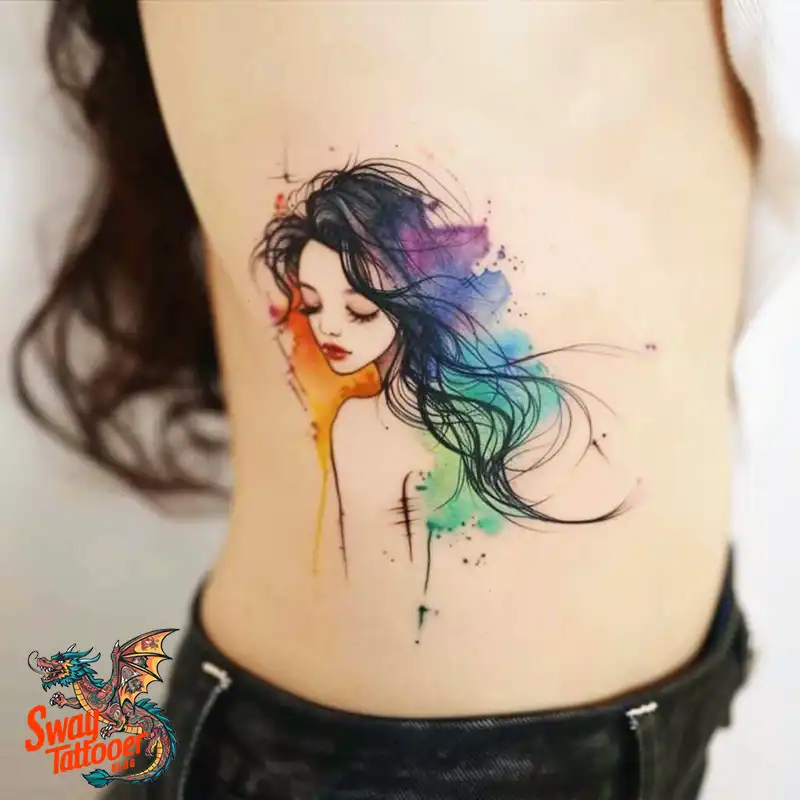
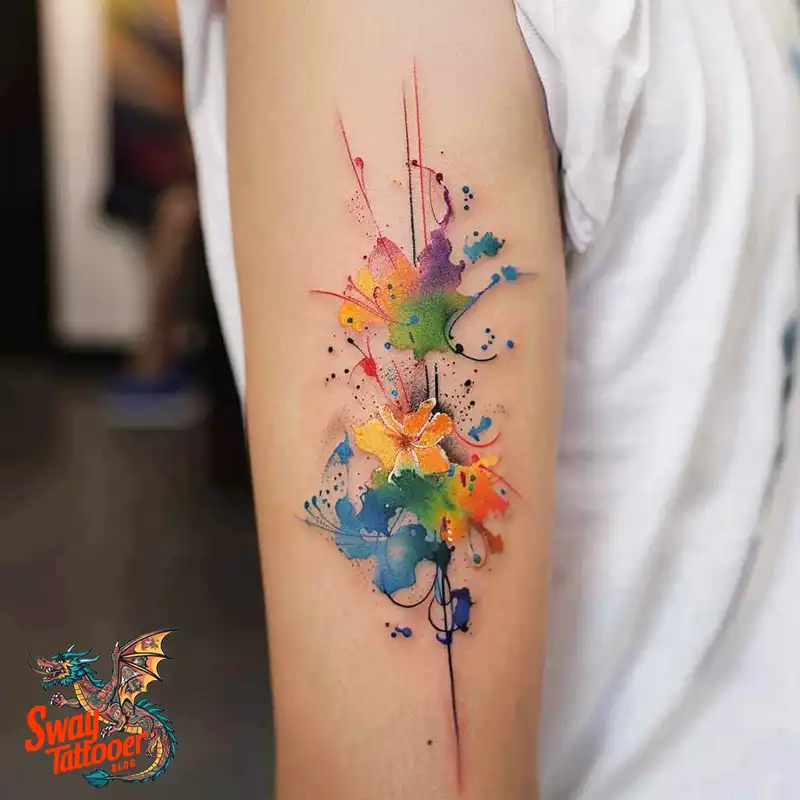
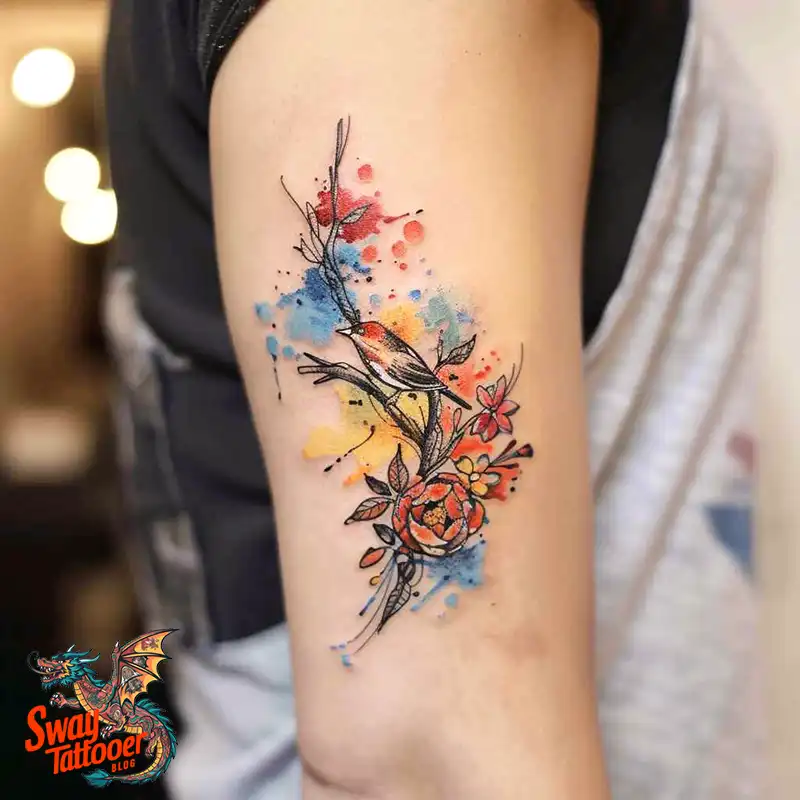
Geometric Watercolor Arts
Summary:
Geometric watercolor inks mix perfect lines and shapes with free-flowing splashes of color. You might see precise triangles or circles behind a messy, colorful background.
Relevance:
These designs show the balance between order and creativity. They stand for harmony, unity, and the fun of mixing rules and imagination.
Portrait Watercolor Inks
Summary:
Portrait watercolor inks paint people’s faces—like friends, family, or heroes—in bright, paint-like strokes. Bold color patches and soft edges bring the face to life.
Relevance:
Portraits keep memories close. Watercolor makes them extra special, turning a photo into a cheerful, artistic tribute to someone you love.
Fantasy Watercolor Inks
Summary:
Fantasy watercolor inks show dragons, fairies, or magical places in glowing pastel colors. Light brushstrokes and soft hues make them feel otherworldly.
Relevance:
If you love stories of magic and adventure, these tattoos let you carry your favorite fantasies on your skin. They remind you to dream and believe in the impossible.
FAQs:
If you’re considering getting a watercolor ink art or are simply curious, here are some frequently asked questions to provide clarity and insight into this unique art form.
What Are Watercolor Tattoos?
Watercolor tattoos look like paint splashes on your skin. They use soft colors that blend, fade, and flow without dark outlines.
How Are Watercolor designs Different from Traditional Tattoos?
Traditional tattoos have bold lines and solid fills. Watercolor tattoos have no outlines. They rely on gentle color blends to create their look.
Do Watercolor Inks Last as Long as Traditional Tattoos?
Watercolor inks often fade faster because they typically use lighter shades and do not contain dark lines. However, a skilled artist and proper aftercare can help them last for many years.
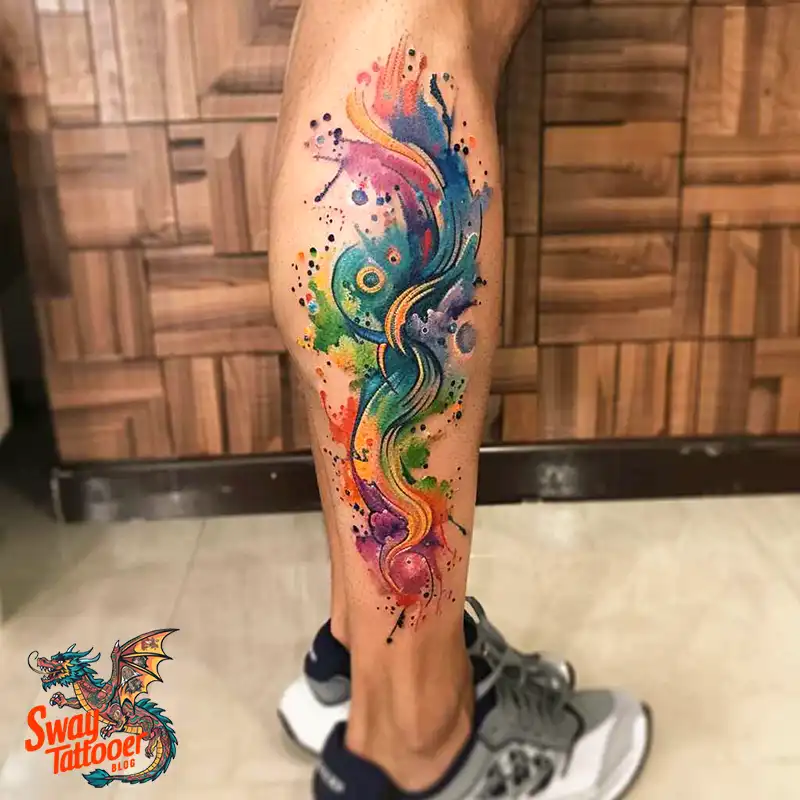
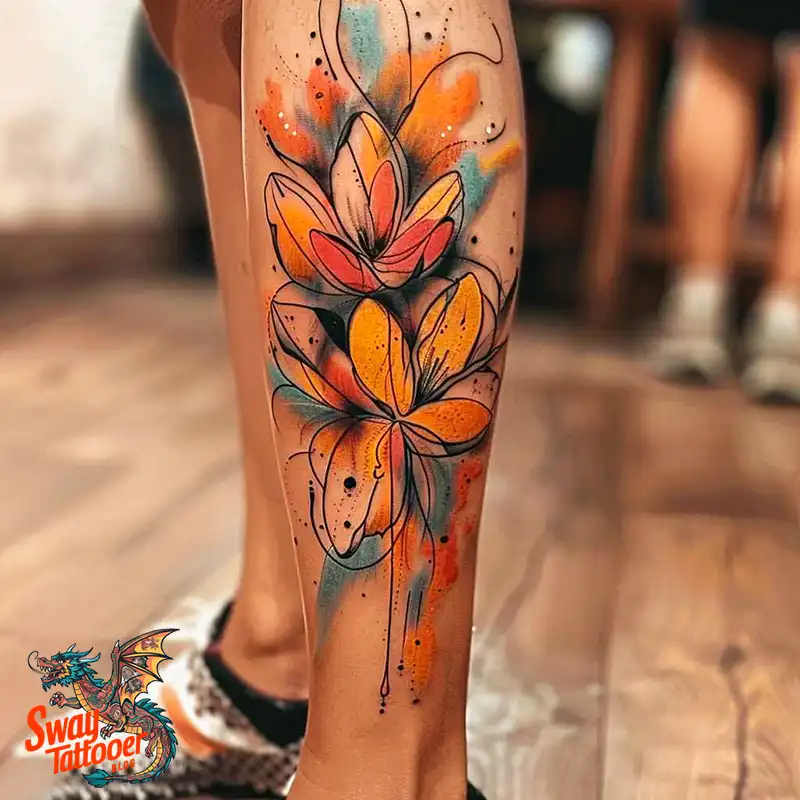
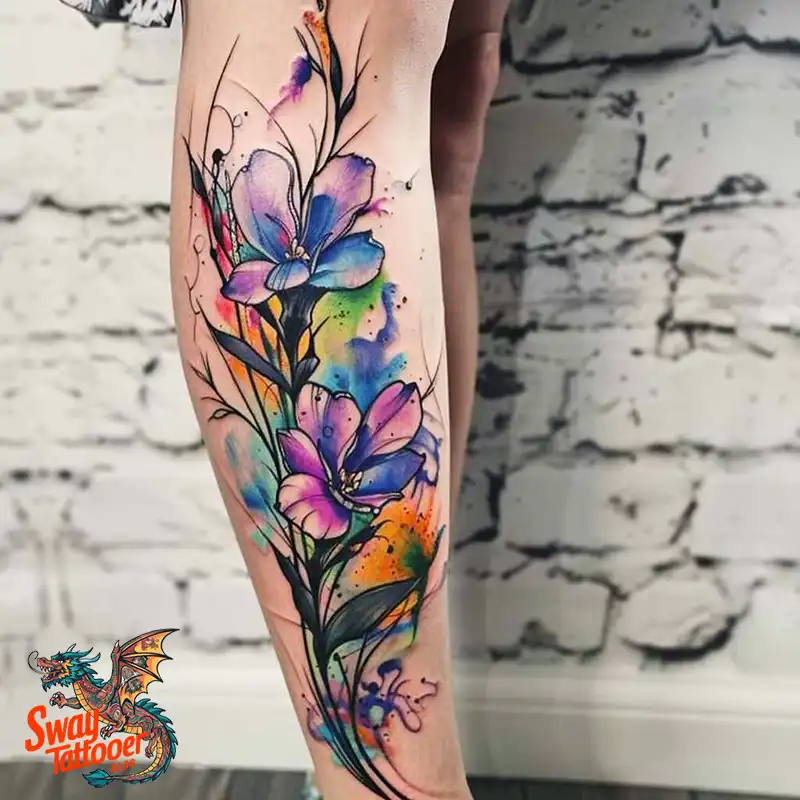
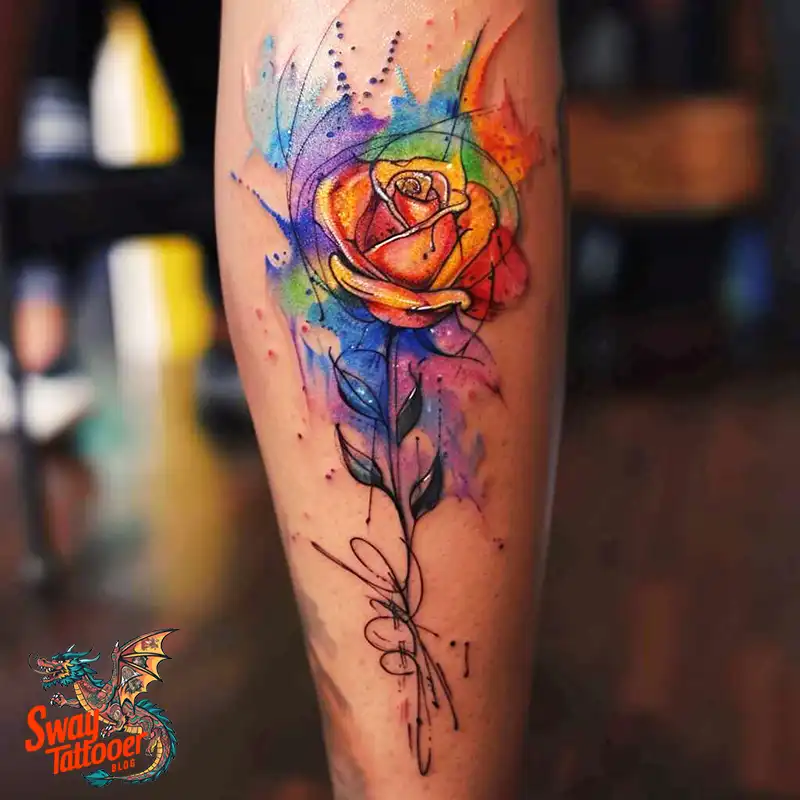
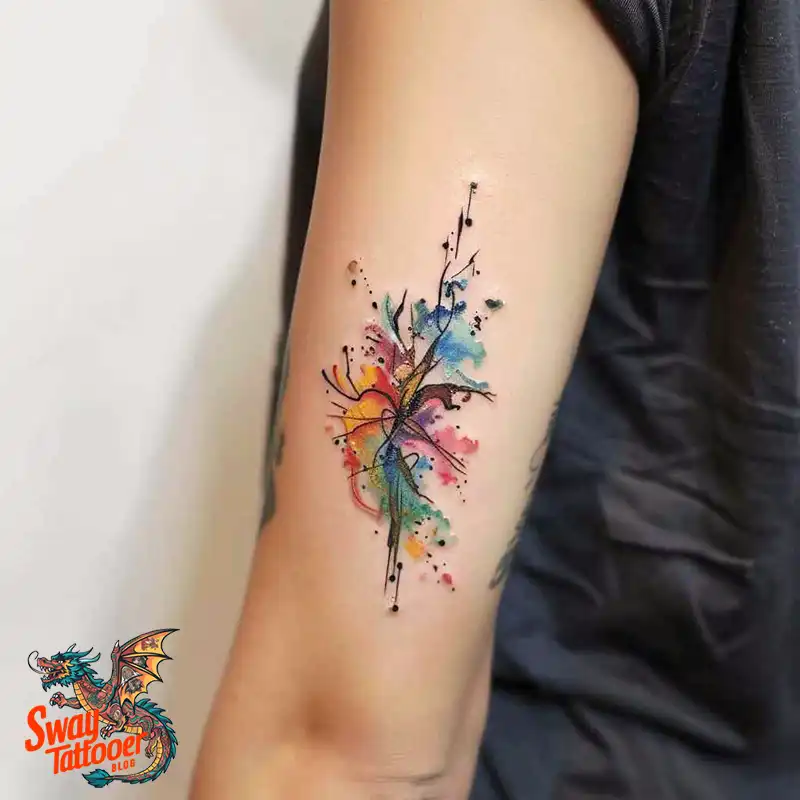
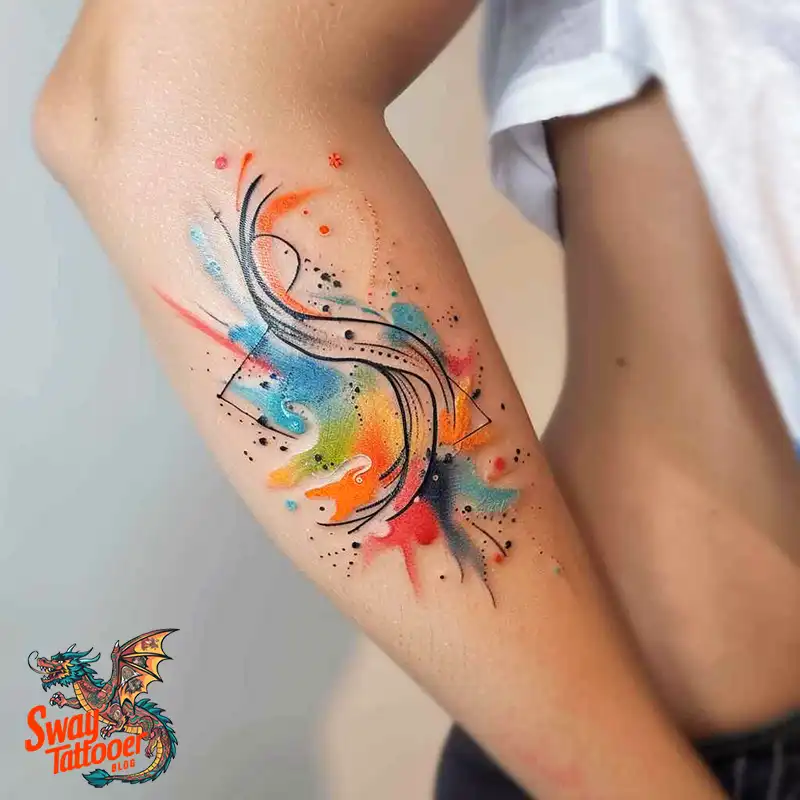
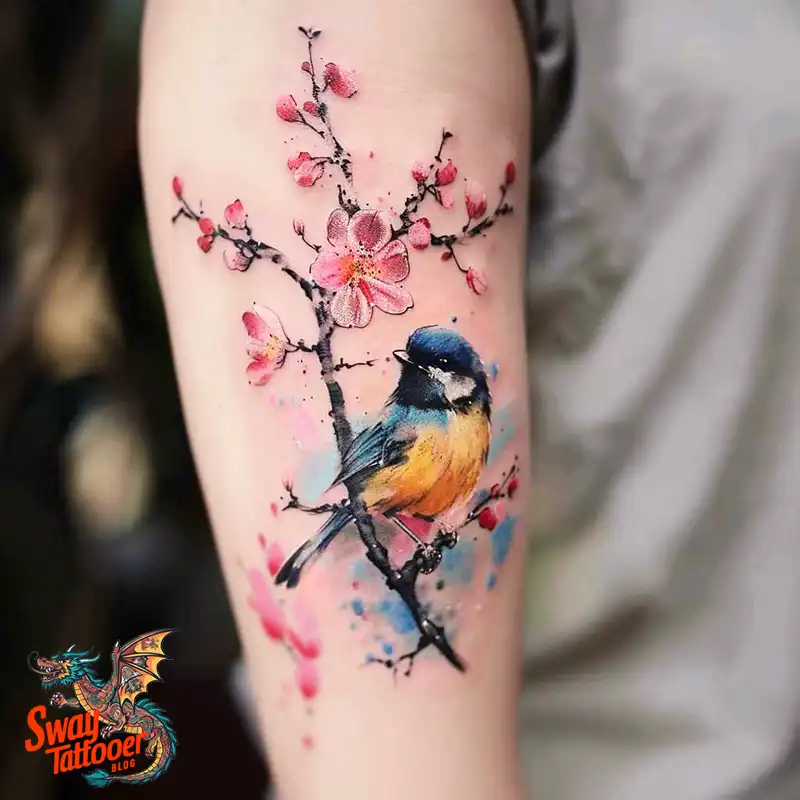
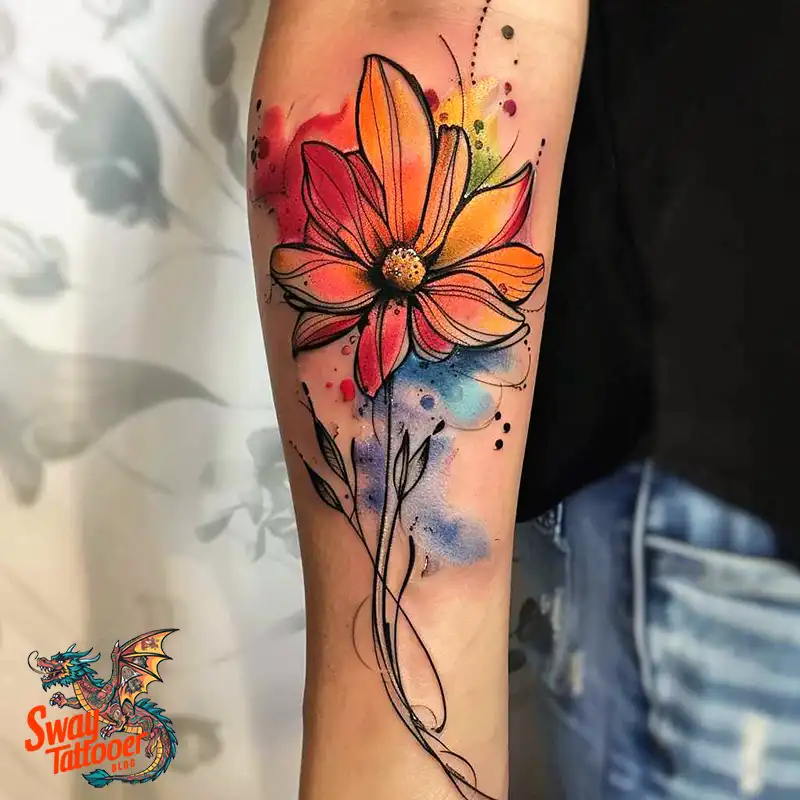
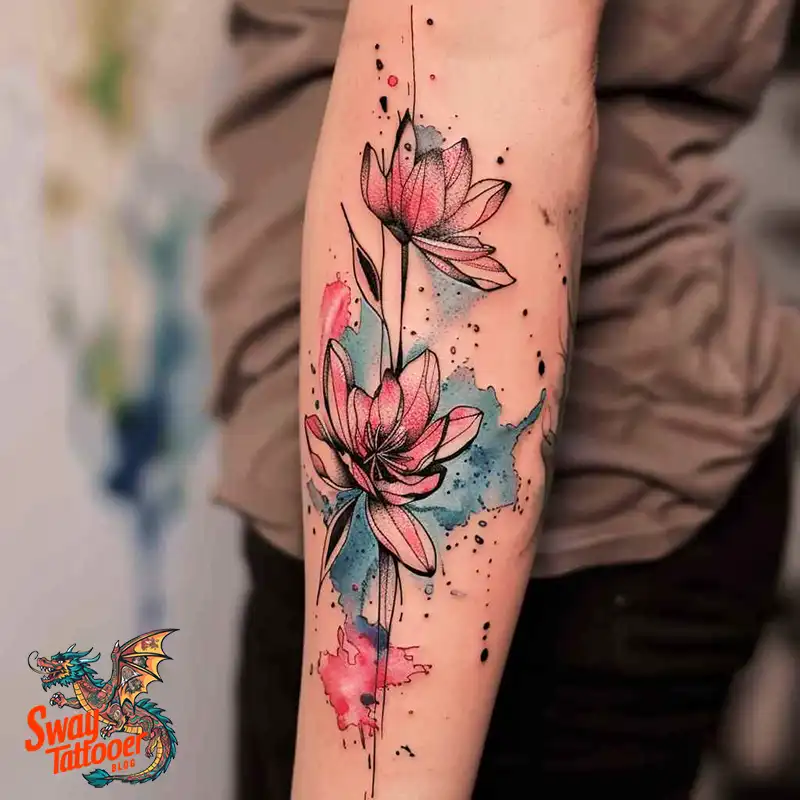
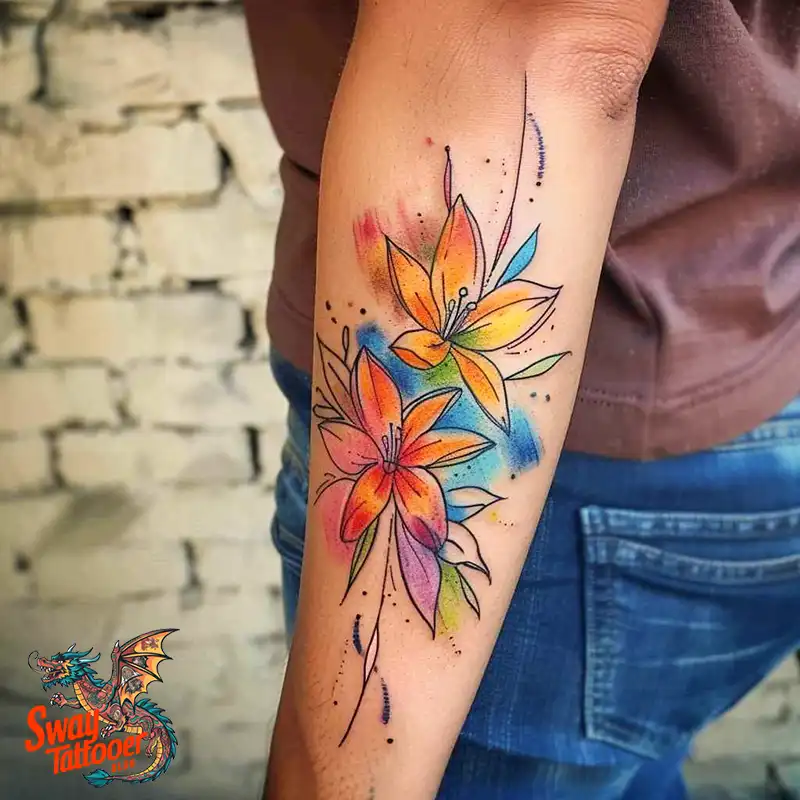
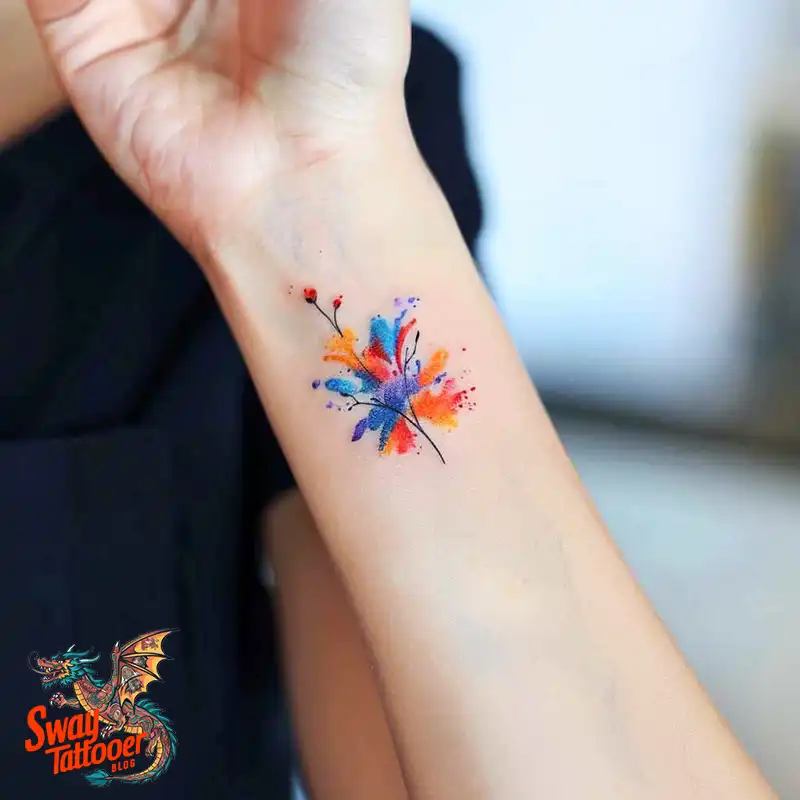
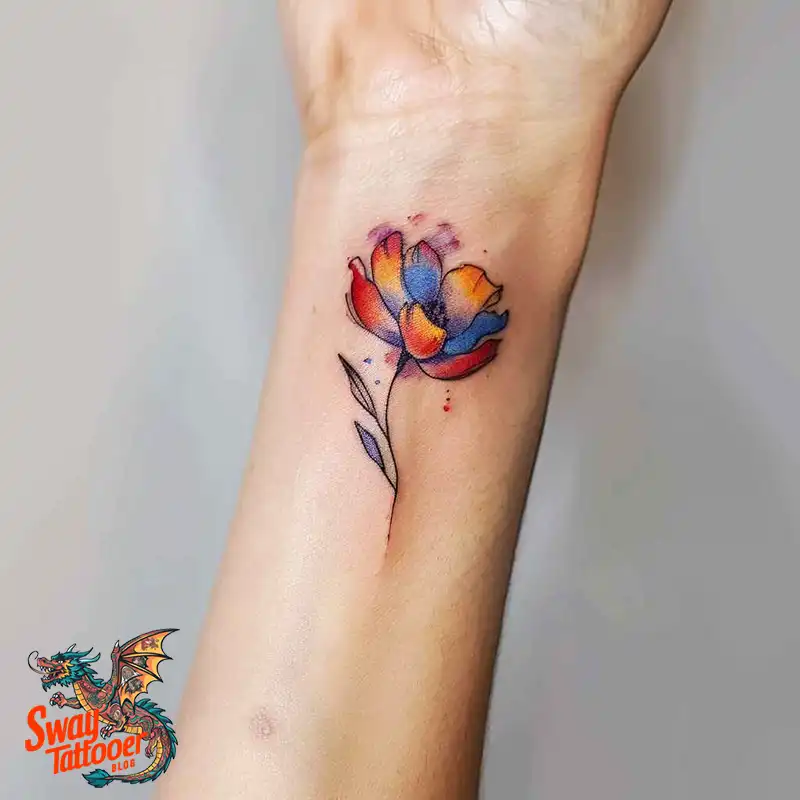
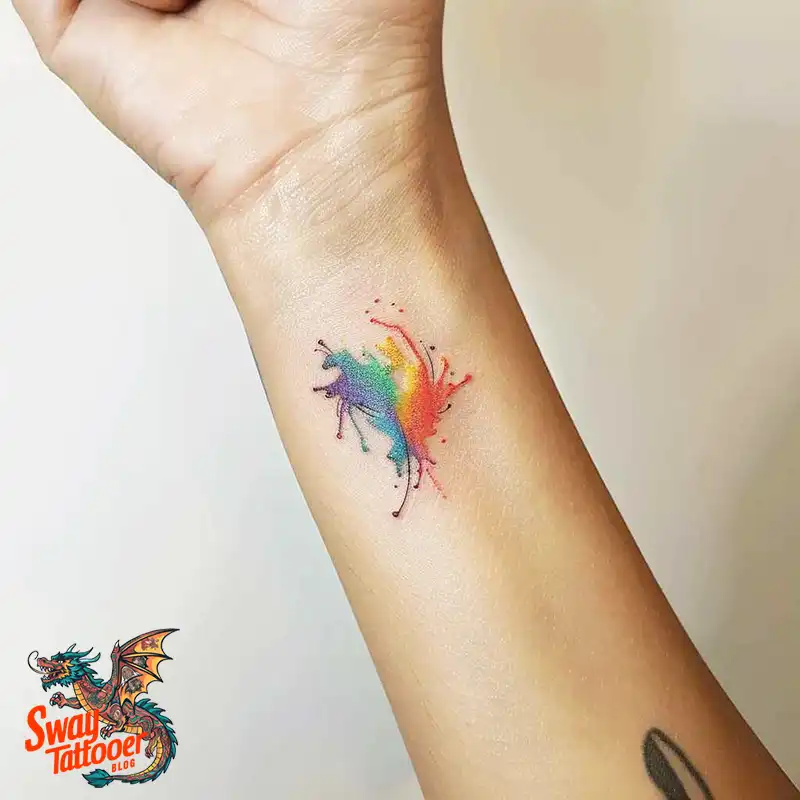
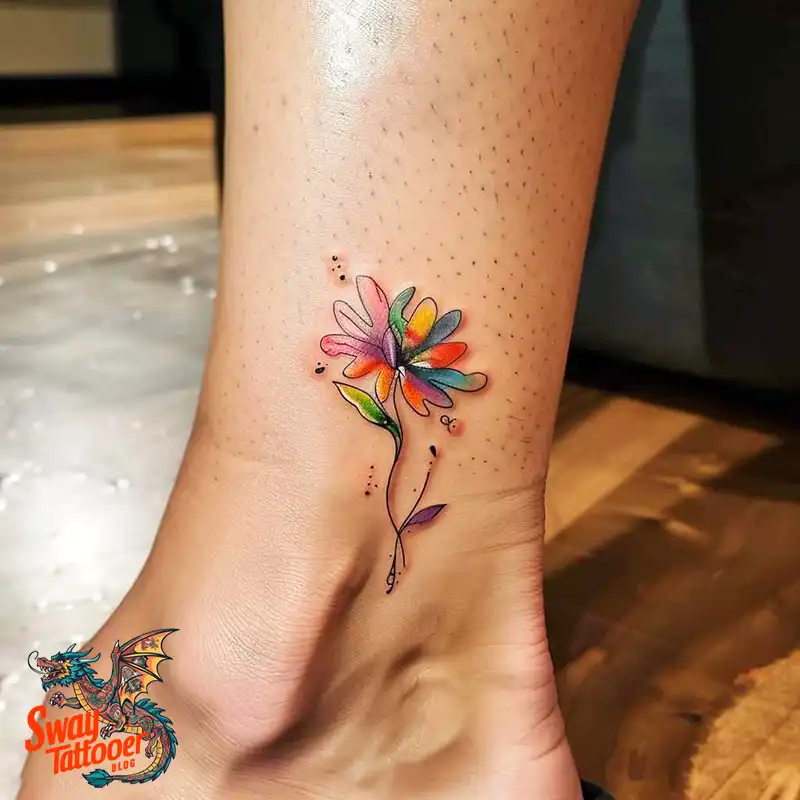
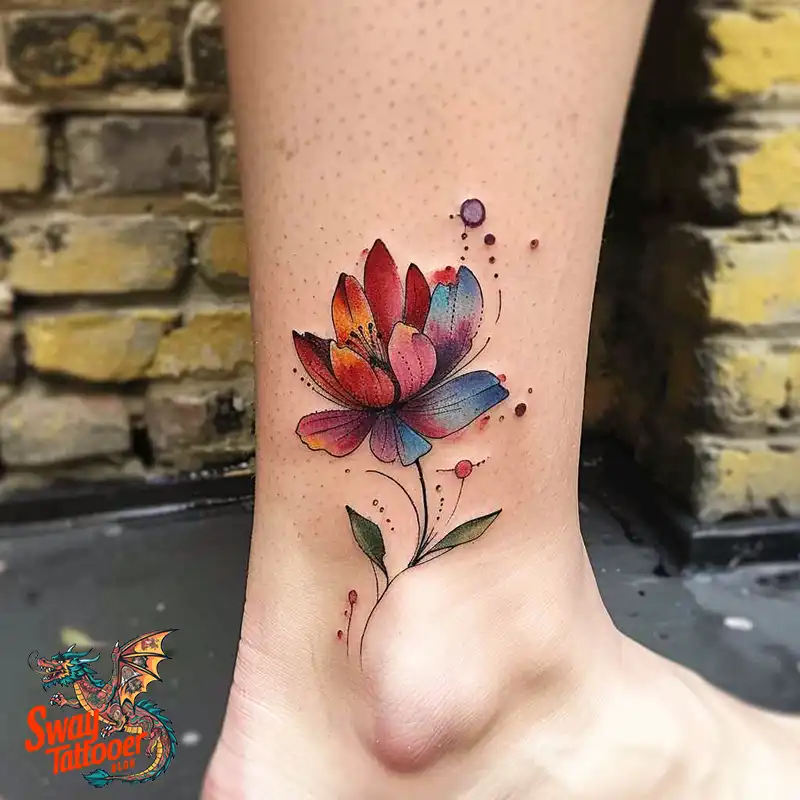
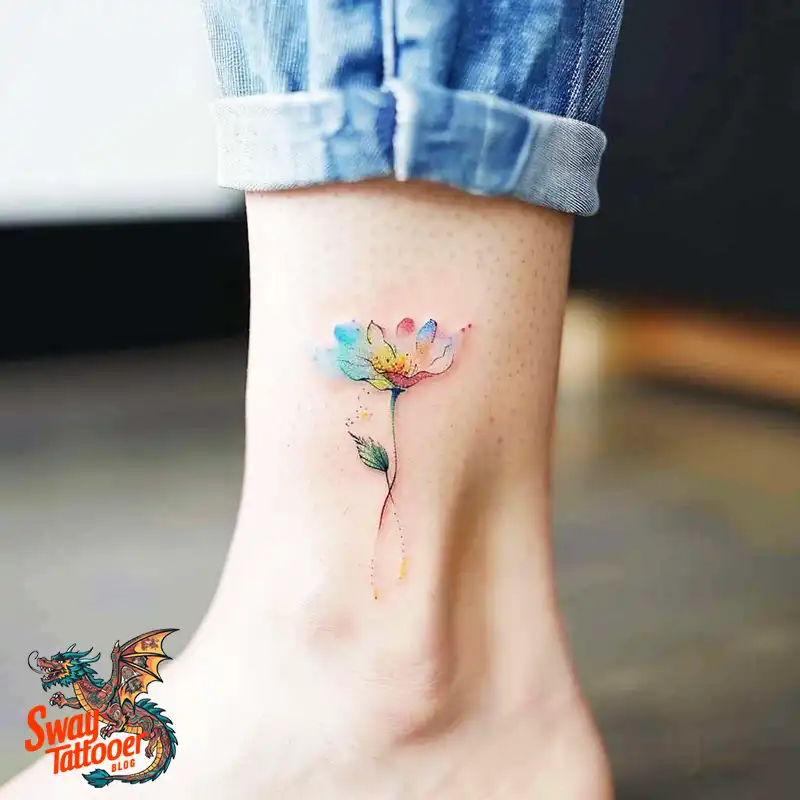
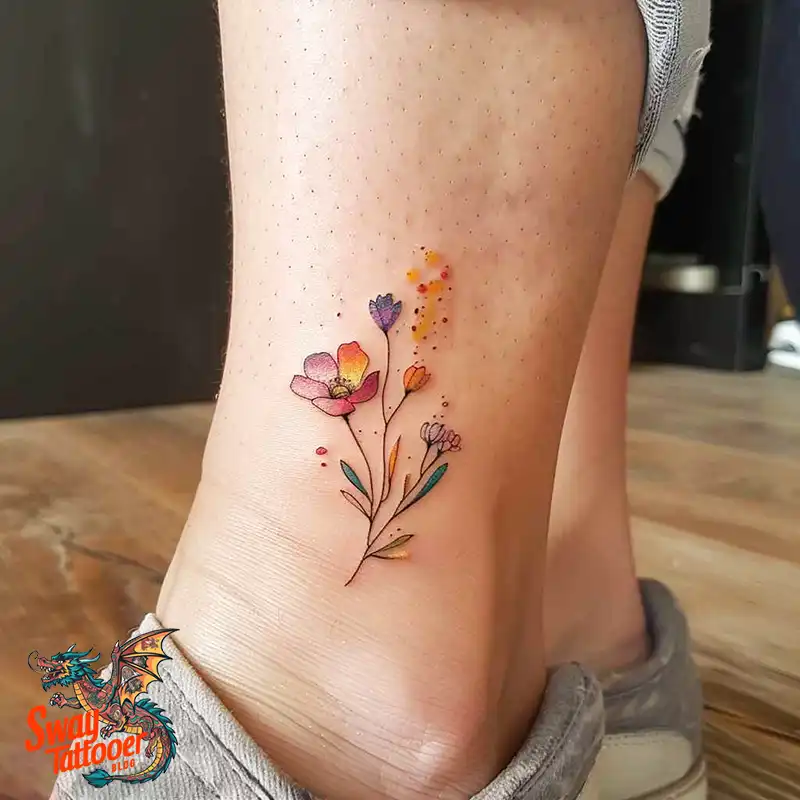
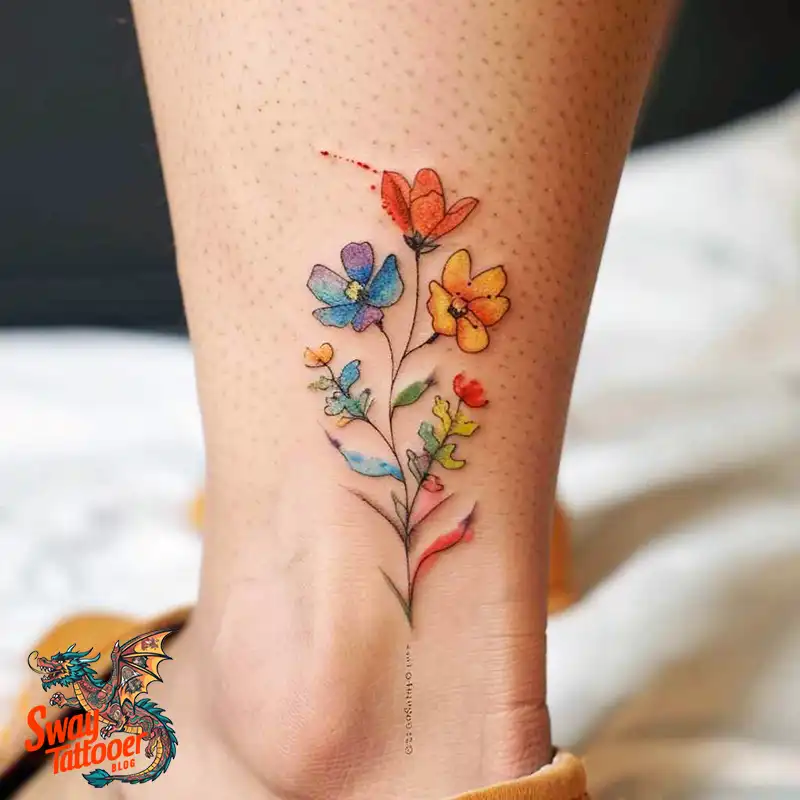
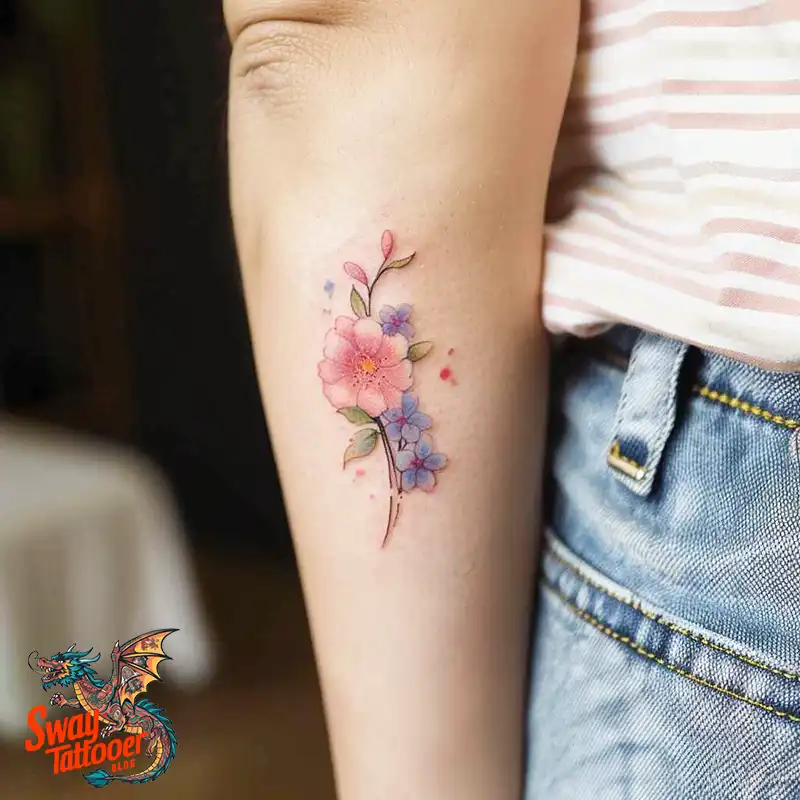
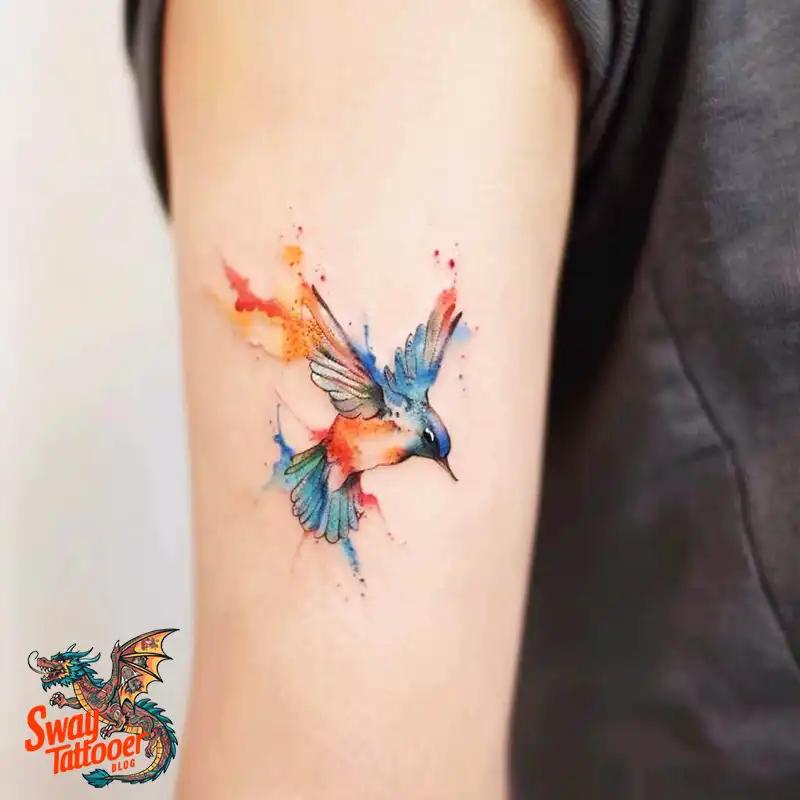
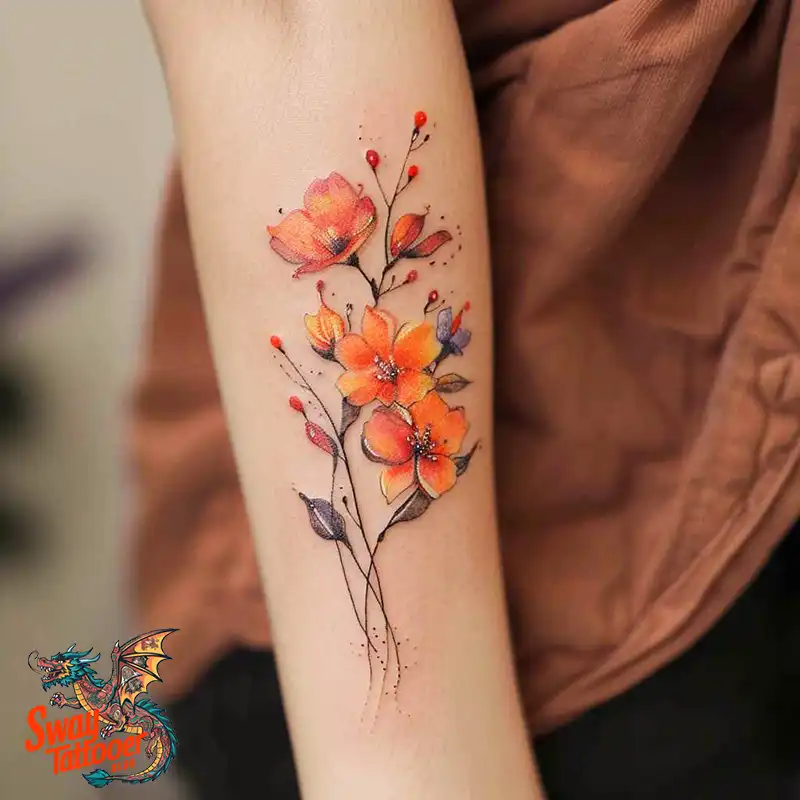
Are Watercolor Tattoos More Painful to Get?
The pain is similar to that of other tattoos. Watercolor designs can take longer because of the extra shading required. So you might sit longer under the needle.
How Do I Choose a Good Tattoo Artist?
Select an artist whose portfolio features watercolor work. Read reviews and check their shop’s cleanliness. Discuss the idea with them in a consultation to ensure they understand it.
What Design Options Work Best for Watercolor Inks?
Watercolor shines with flowers, animals, clouds, and abstract shapes. Designs that flow and have no sharp edges look best in watercolor.
How Do I Take Care of My Tattoo?
- Keep It Clean: Wash gently with mild soap and warm water.
- Stay Moist: Use the lotion your artist suggests.
- Avoid Sun: Cover your tattoo or use sunscreen once it’s healed.
- Follow Your Artist’s Advice: They know best how to care for your new ink.
Are There Any Risks with Tattoos?
They share the same risks as other tattoos, including infection, allergic reactions, and poor healing. Select a trusted artist who uses clean tools and adheres to safety guidelines. Provides proper aftercare instructions.
Can Watercolor Tattoos be Combined with Other Styles?
Yes! You can mix watercolor with bold lines, geometric shapes, or black‑and‑gray shading. Talk with your artist to see what works best.
Do Watercolor Tattoos Fade Faster?
They can fade more quickly because the colors are light and delicate. Regular touch-ups and proper care will help your tattoo stay vibrant longer.
Can I Cover Up an Old Tattoo with a Watercolor Design?
Yes, but it’s tricky. How well it works depends on the color, size, and age of the old tattoo. A skilled artist can tell you if a watercolor cover‑up will work.
Are Watercolor Arts Suitable for All Skin Tones?
Watercolor works well on all skin tones, but light colors may not appear as vibrant on darker skin. A skilled artist will adjust colors to ensure the tattoo looks great on you.
How Much Do Tattoos Cost?
Tattoos often cost more because they need exceptional skill and time. Prices vary depending on the artist, size, and level of detail. Always ask your artist for a quote or estimate.
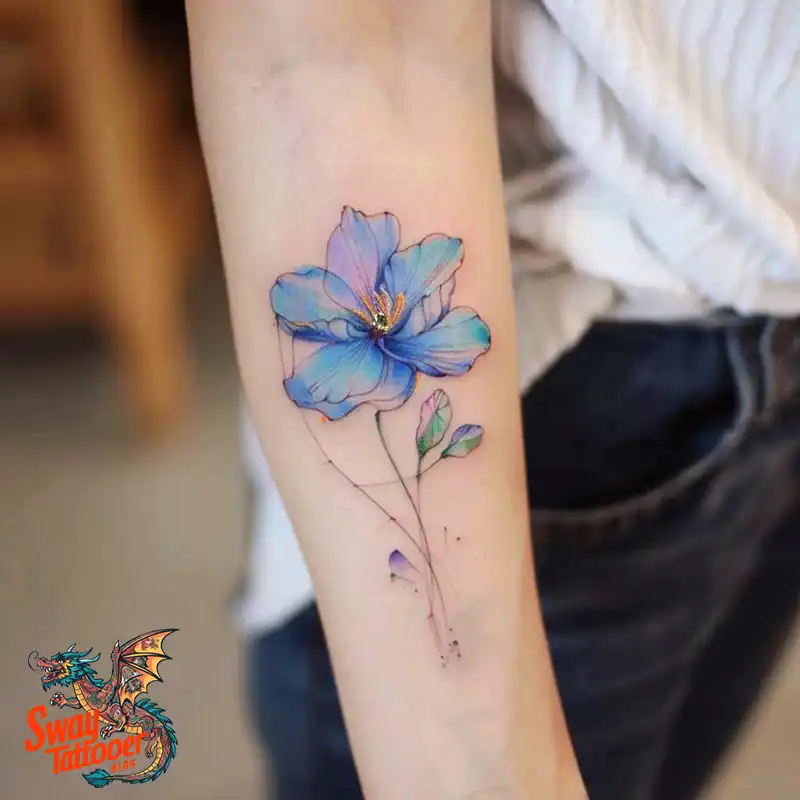
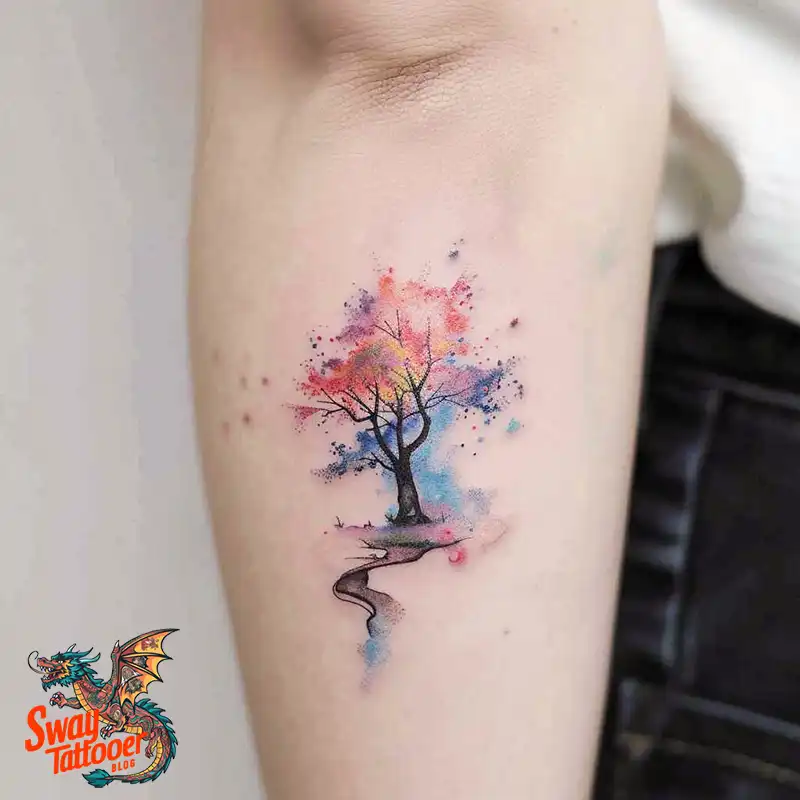
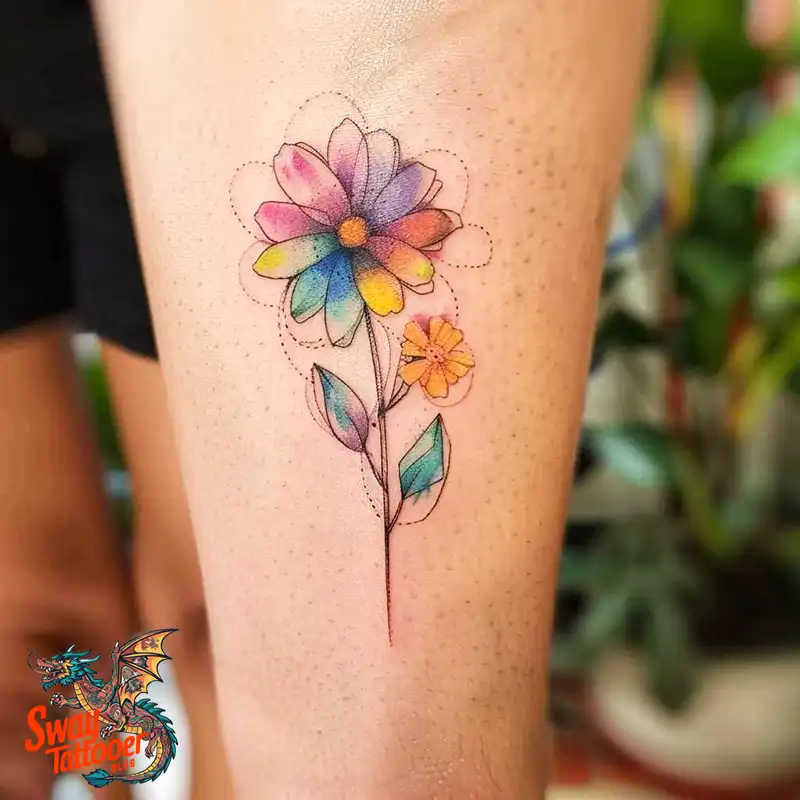
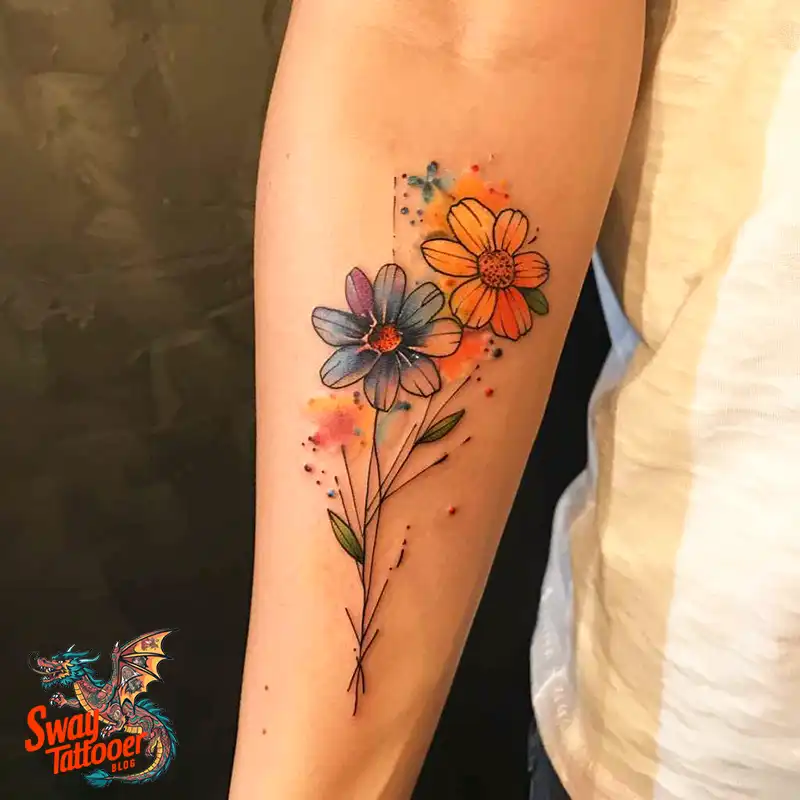
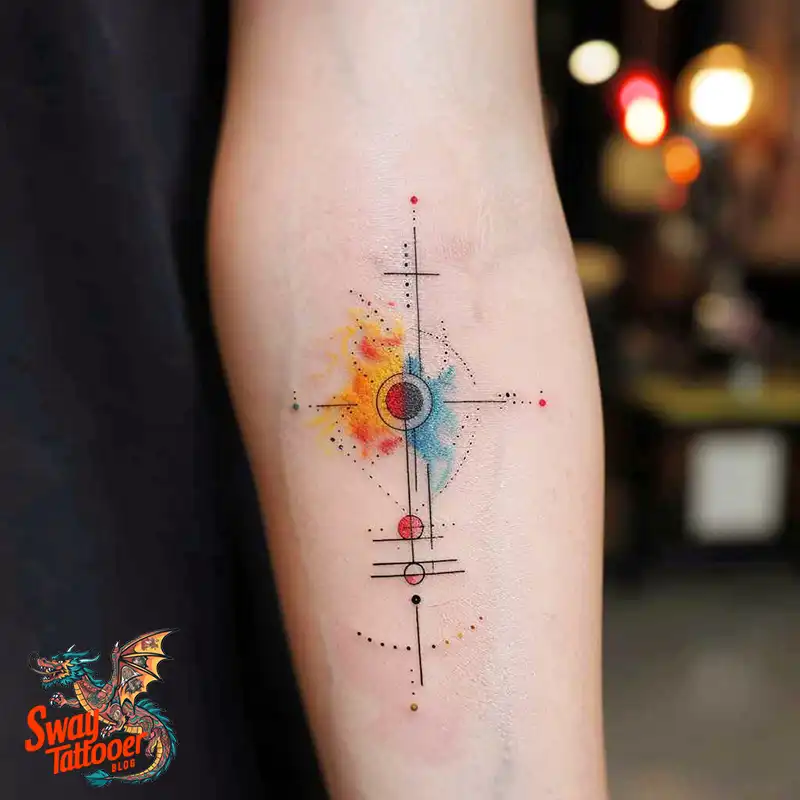
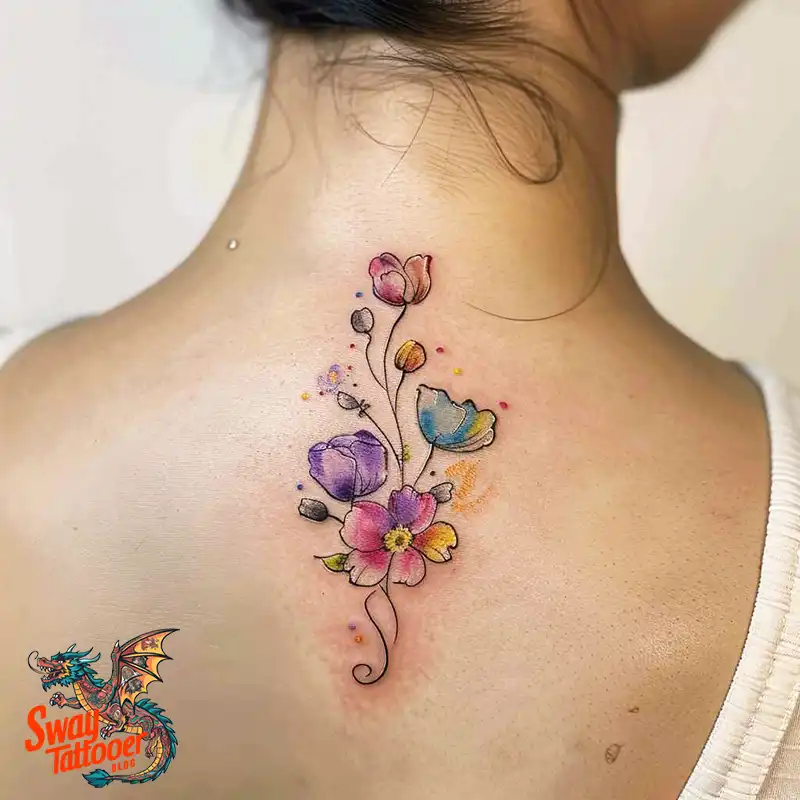
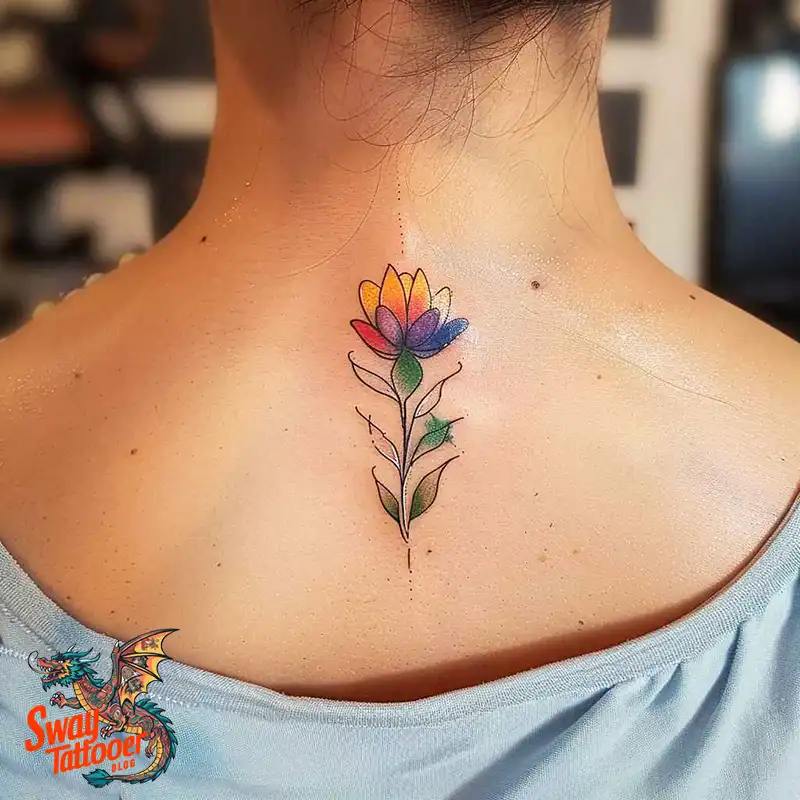
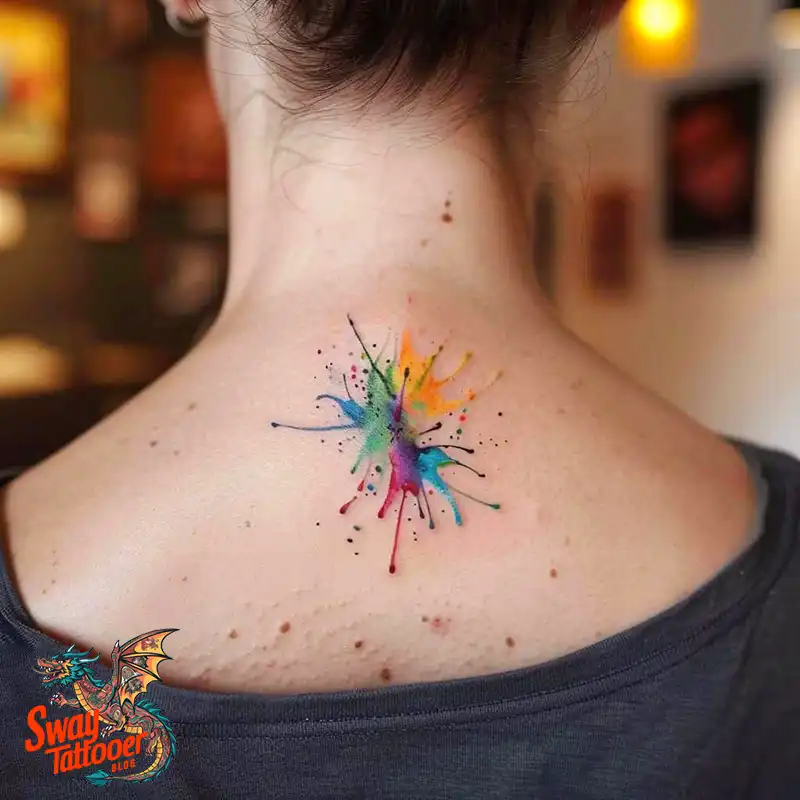
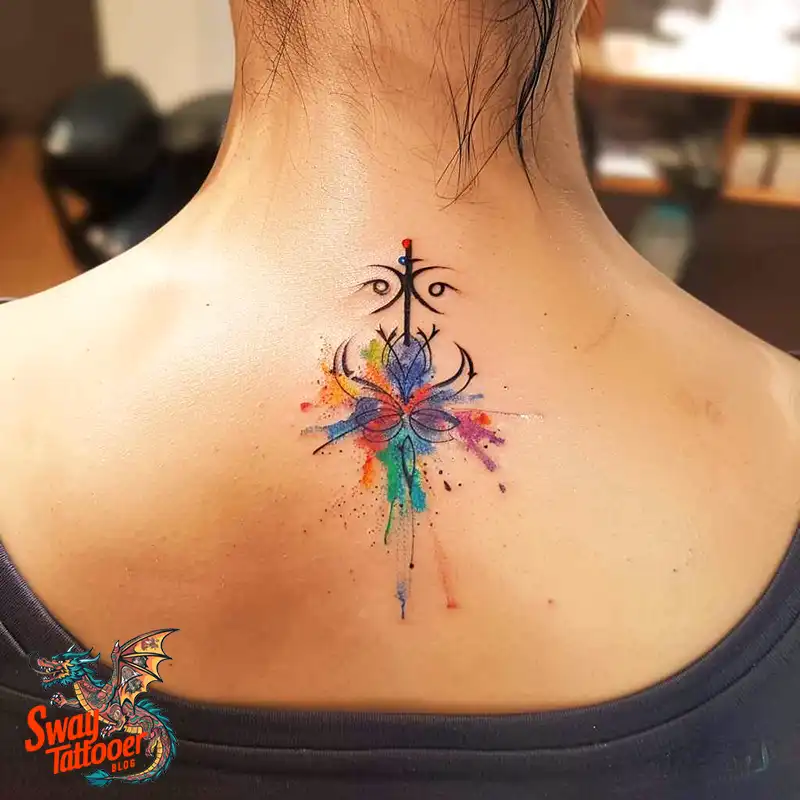
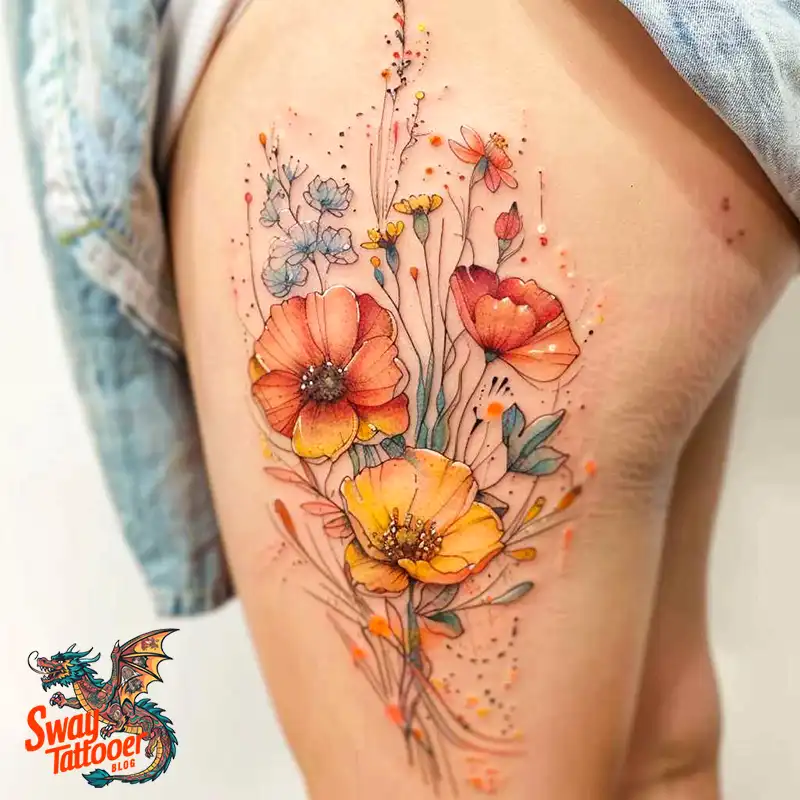
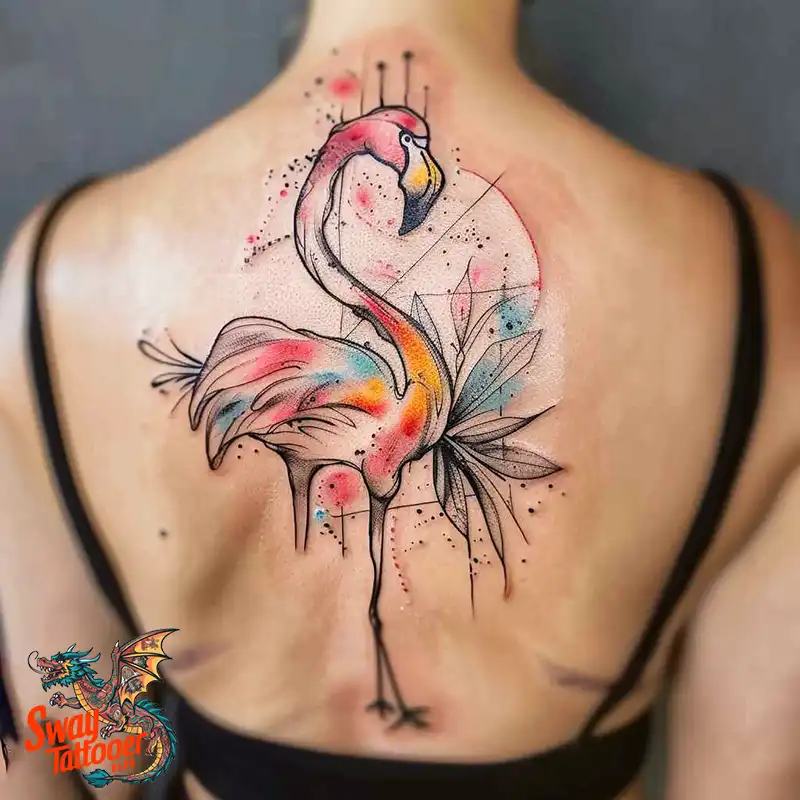
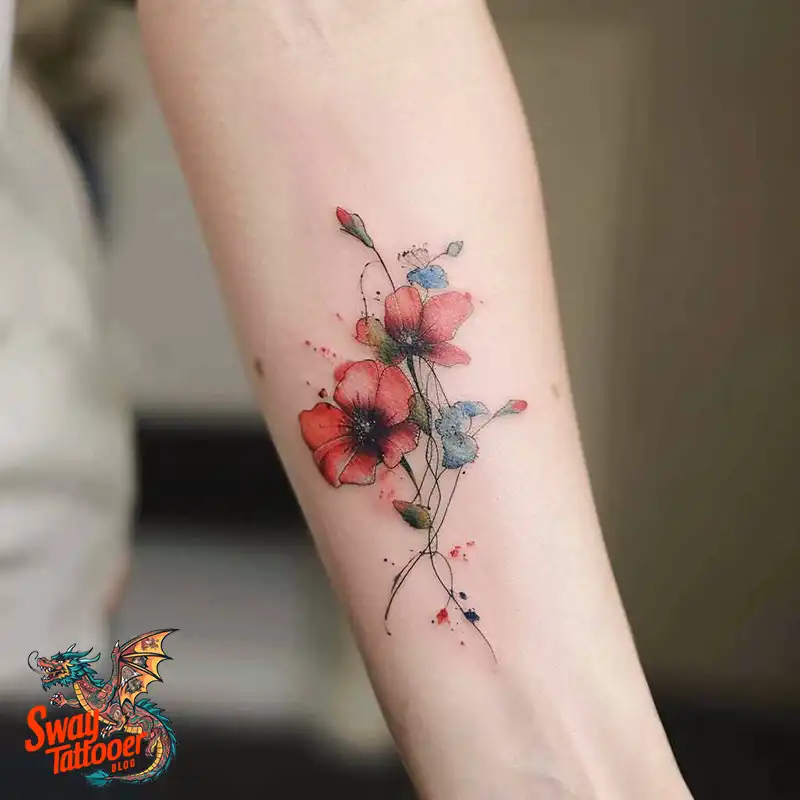
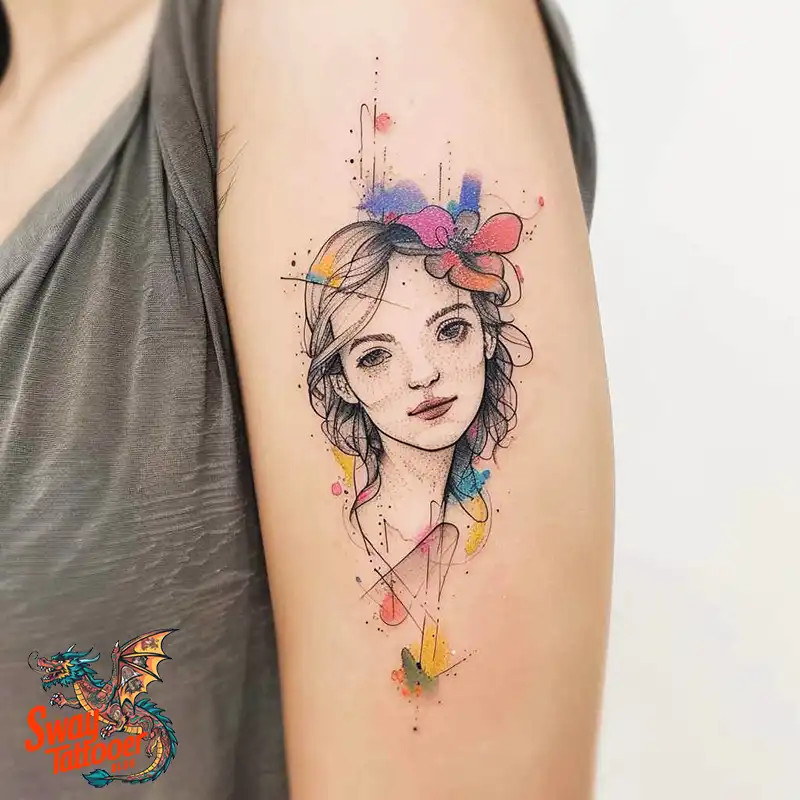
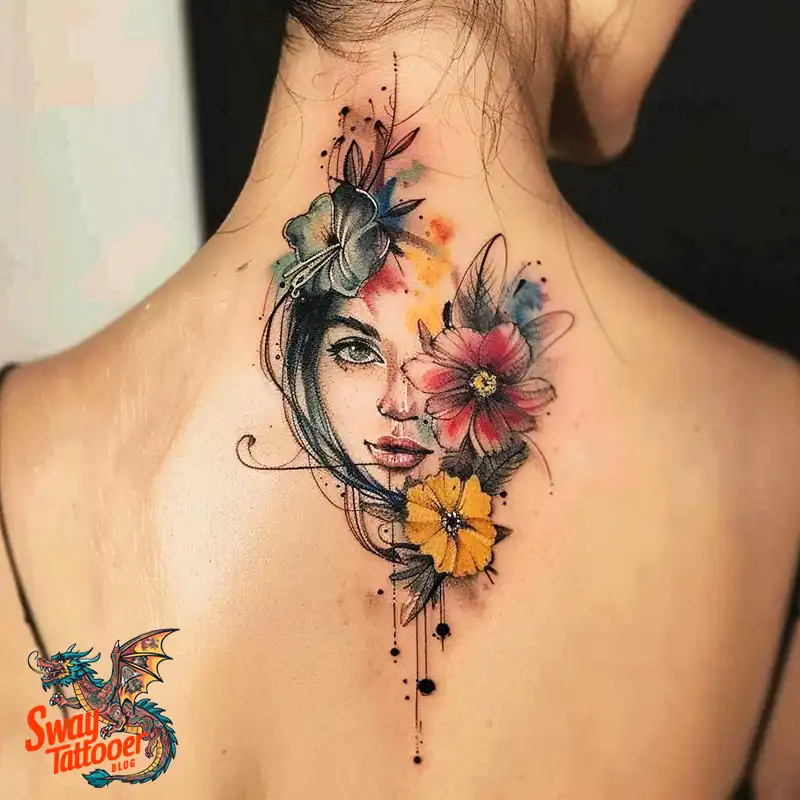
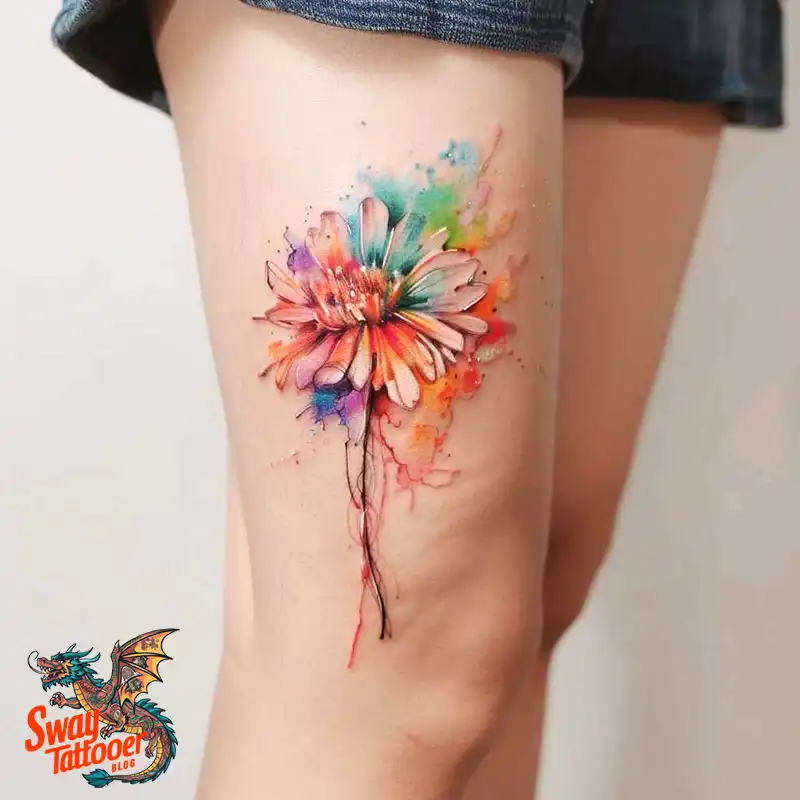
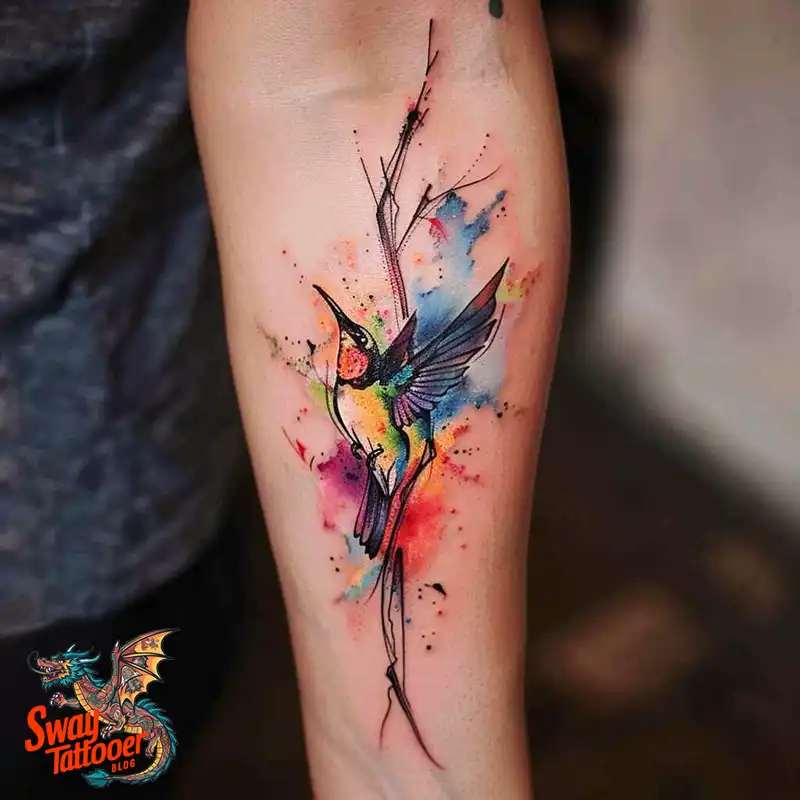
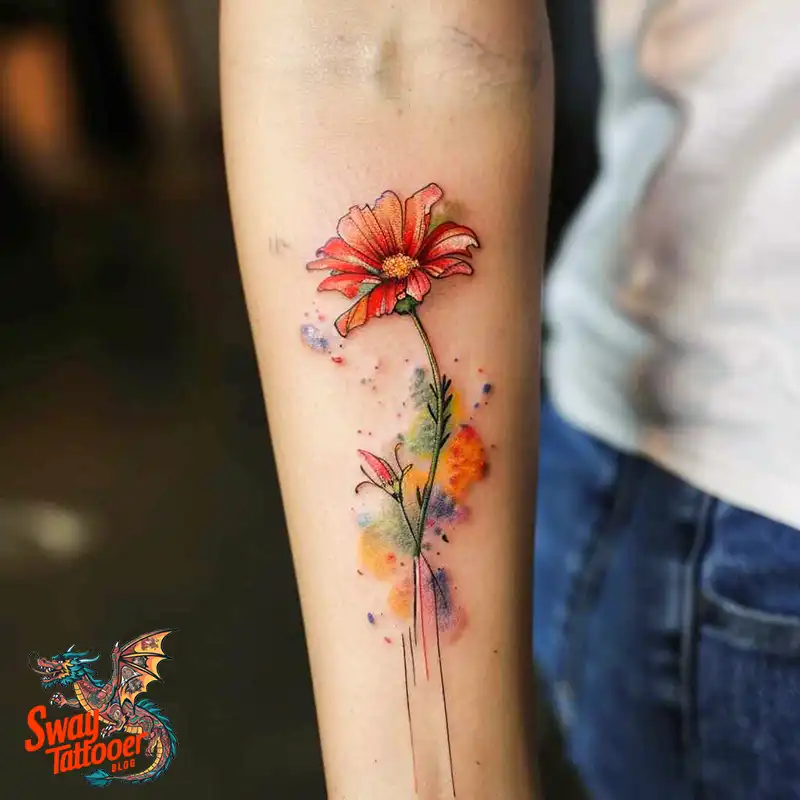
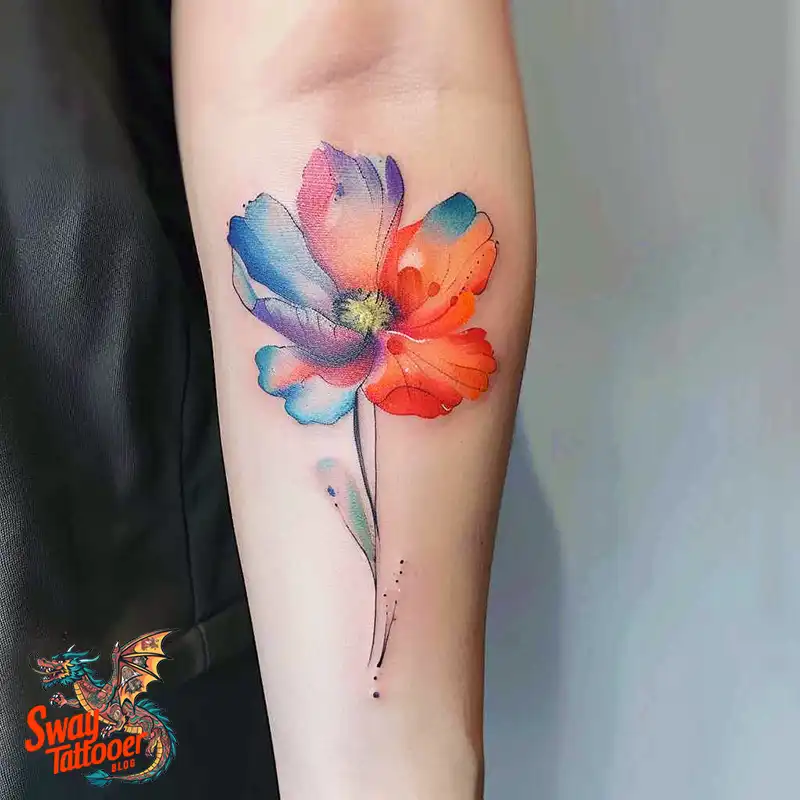
Conclusion
In short, watercolor tattoos are a bright new trend in body art. They mix soft, flowing colors with the personal touch of a tattoo.
Watercolor designs stand out because they have no black outlines. They employ a range of colors and distinctive shading techniques. This style requires an artist who knows how to blend ink as smoothly as paint.
We also discussed the care of tattoos. They can fade faster than regular tattoos because the colors are light. However, if you follow the aftercare steps and get touch-ups, they can remain beautiful for years.
Tattoos give you the freedom to choose any design—flowers, animals, or even abstract shapes. They let you show your style in a fresh, artistic way. As this trend continues to grow, people are pushing tattoo art to new heights. A watercolor tattoo isn’t just ink on skin. It’s a living picture of your personality and feelings.

Leave a Reply